

The Autobiography of a Yogi: Why You Should Read It
- By Shivangi Chatterji
- July 16, 2024
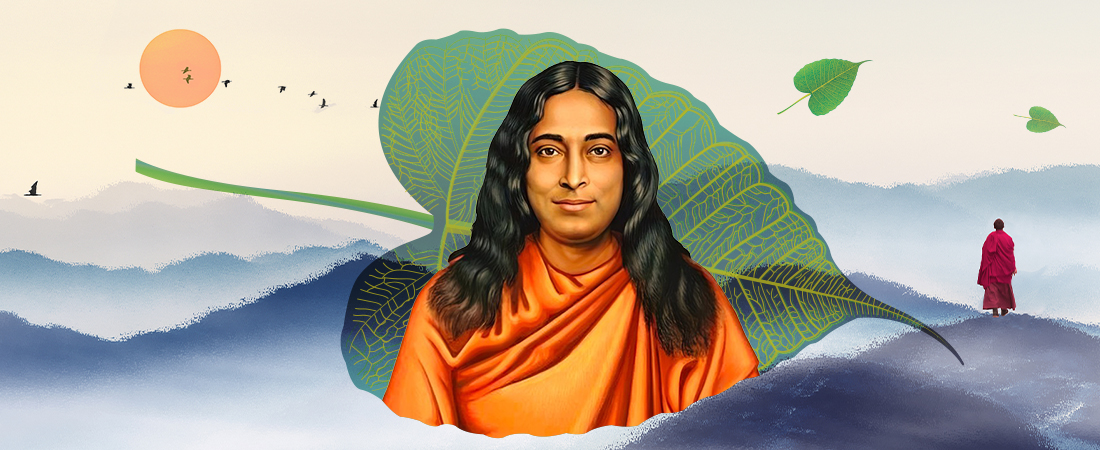
The timeless bestseller by Paramahansa Yogananda is a favourite among celebrities & seekers of enlightenment
If we were to ask you to identify one common thread that runs between Mahatma Gandhi and Thaliaiva Rajnikanth, Pandit Ravi Shankar and Virat Kohli we’re sure you would be stumped. We were too when we found out that all of these people along with Steve Jobs, Elvis Presley, George Harrison, Deepak Chopra and many more celebrities have publicly acknowledged reading Autobiography of a Yogi by Paramahansa Yogananda, an Indian yogi and spiritual leader.
This timeless memoir is a treasury of spiritual wisdom that chronicles the life of this yogi and explores the transformative power of yoga.
Who is Paramahansa Yogananda?
Born Mukunda Lal Ghosh in 1893 in Gorakhpur, India, Yogananda’s spiritual journey began right from childhood. His devout Hindu family laid the groundwork for an early introduction to yogic teachings and meditation. He went on to encounter several spiritual mentors throughout his formative years who enriched his experiences.
In 1920, Yogi Paramahansa Yogananda embarked on a journey that would significantly impact the spiritual landscape of the Western world. At the behest of his guru, he traveled to America to spread the word about yoga and meditation. Despite initial challenges, Yogananda’s magnetic presence and profound teachings captivated his audiences. He founded the Self-Realization Fellowship (SRF) in Los Angeles, a spiritual organisation that disseminates his teachings worldwide.
What Makes “Autobiography of a Yogi” Famous?

Yogananda’s quest for truth led him towards the enlightened soul of his guru, Swami Sri Yukteswar Giri. His teacher helped him deepen his practice and the profound philosophical underpinnings of Eastern spirituality. In this autobiography, Yogananda shares his path to mastery and his journey to seeking truth and enlightenment.
Coupled with his personal explorations, what makes Autobiography of a Yogi a very special book is that he has captured all his insights in a form that is highly accessible to everyone, from all walks of life.
In this book, he has also written about his remarkable encounters with spiritual luminaries from all over the world and his mystical experiences. His anecdotes are awe-inspiring and serve as an aspiration to his readers who see this book as a tool to appreciate the absoluteness of spiritual principles across cultures and traditions. This is why so many people and even celebrities have credited the book with transforming their lives and shaping their spiritual outlook.

Why Should You Read "Autobiography of a Yogi"?
- “Since you alone are responsible for your thoughts, only you can change them.” Conscious, purposeful living is a way to keep your thoughts flowing and positive. The kind of thoughts you entertain shape your experience of the world. Always focus on the thoughts that bring you health and happiness.
- “The power of unfulfilled desires is the root of all man’s slavery” Learning to let go of want and desire is not easy but ultimately knowing that they will trap you in a vicious cycle. The best way to live is to be in the present moment instead of wondering about what might have been.
- “Straightforwardness without civility is like a surgeon’s knife, effective but unpleasant. Candor with courtesy is helpful and admirable.” While the truth can be harsh, it is often about how it is delivered. While we must be honest and firm with our boundaries, we must be careful not to be harsh in our criticism and always be constructive in our feedback.
A Book and Beacon of Light
Autobiography of a Yogi is more than a narrative of a man’s spiritual journey; it is a timeless testament to the universality of spiritual wisdom and the boundless potential of the human spirit. Readers are invited to embark on their own journey of self-discovery, guided by the light of Yogananda’s teachings and the benefits of yoga.
As we reflect on his life and teachings, we are reminded that the path to enlightenment is within each of us, waiting to be discovered through meditation, mindfulness and the pursuit of divine realization.
As Yogananda eloquently put it, “The true basis of religion is not belief, but intuitive experience. Intuition is the soul’s power of knowing God. To know what religion is really all about, one must know God.”
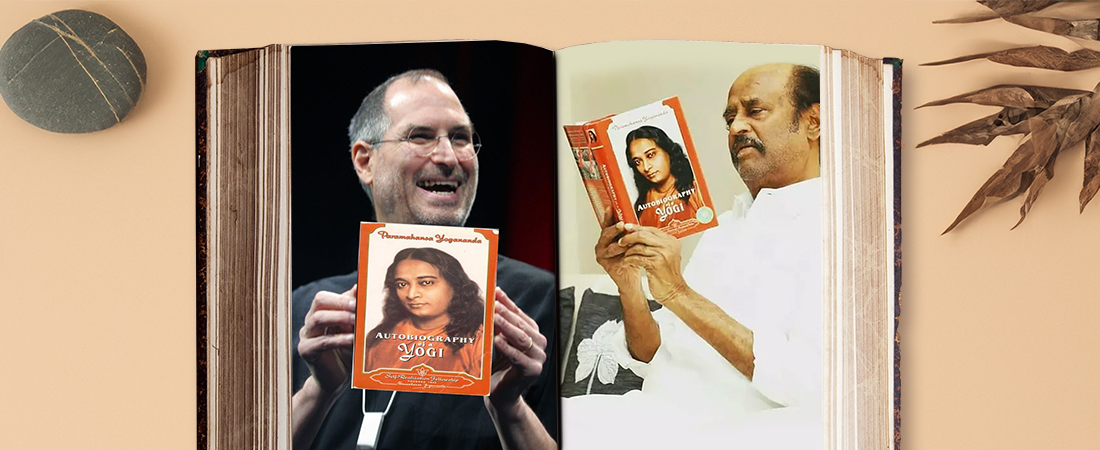
You May Also Like

Master Your Money With These Personal Finance Bestsellers

Must-Read Biographies of Tennis Players
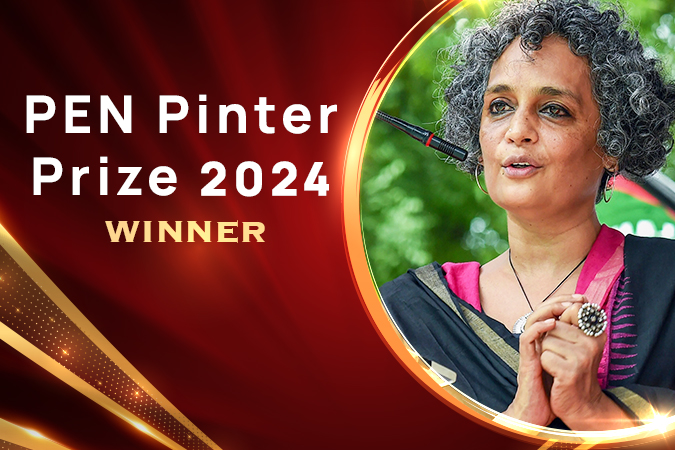
A Literary Triumph! Arundhati Roy Wins the 2024 PEN Pinter Prize

- Autobiography of a Yogi
One of the world's most acclaimed spiritual classics.
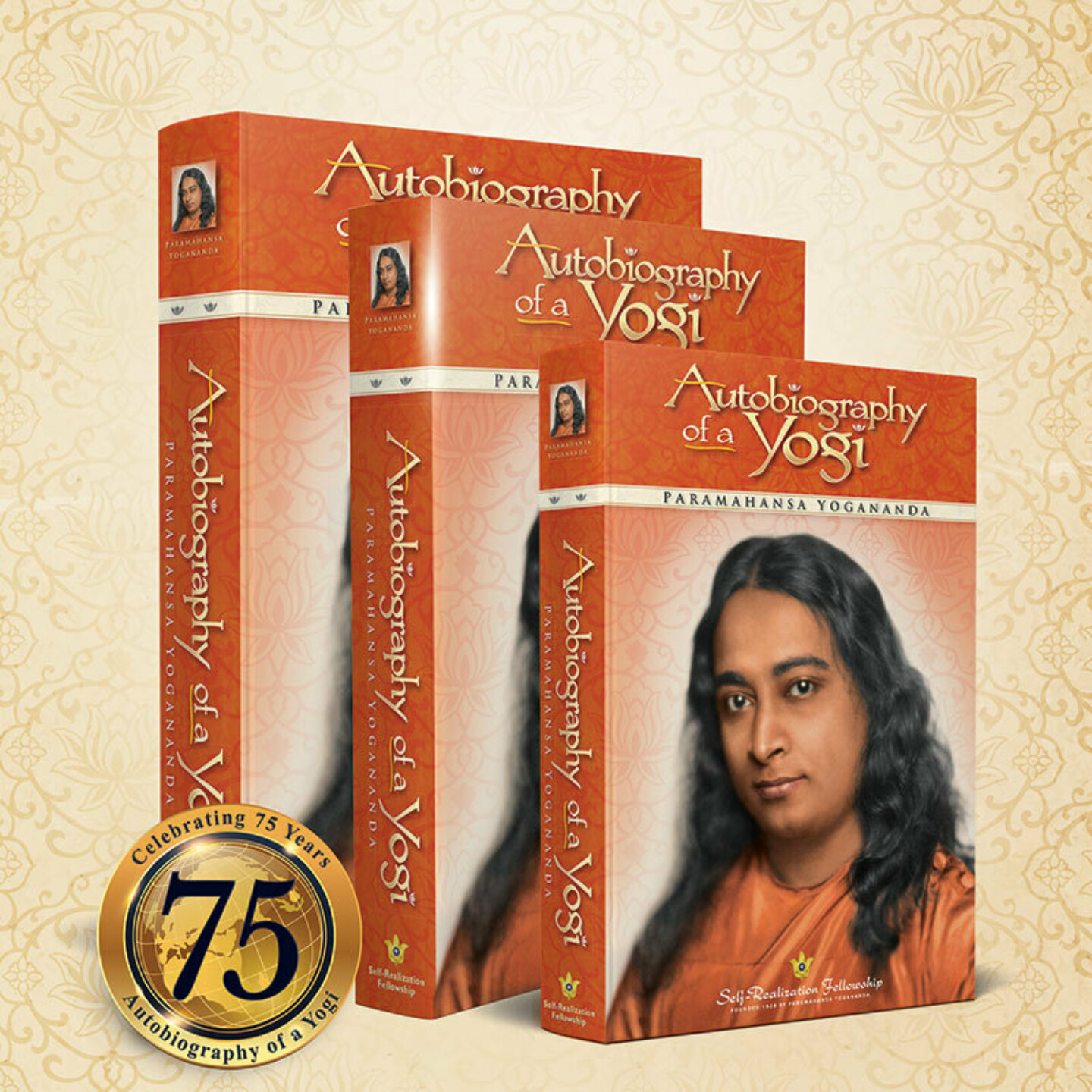
Share this on
An Enduring Spiritual Classic
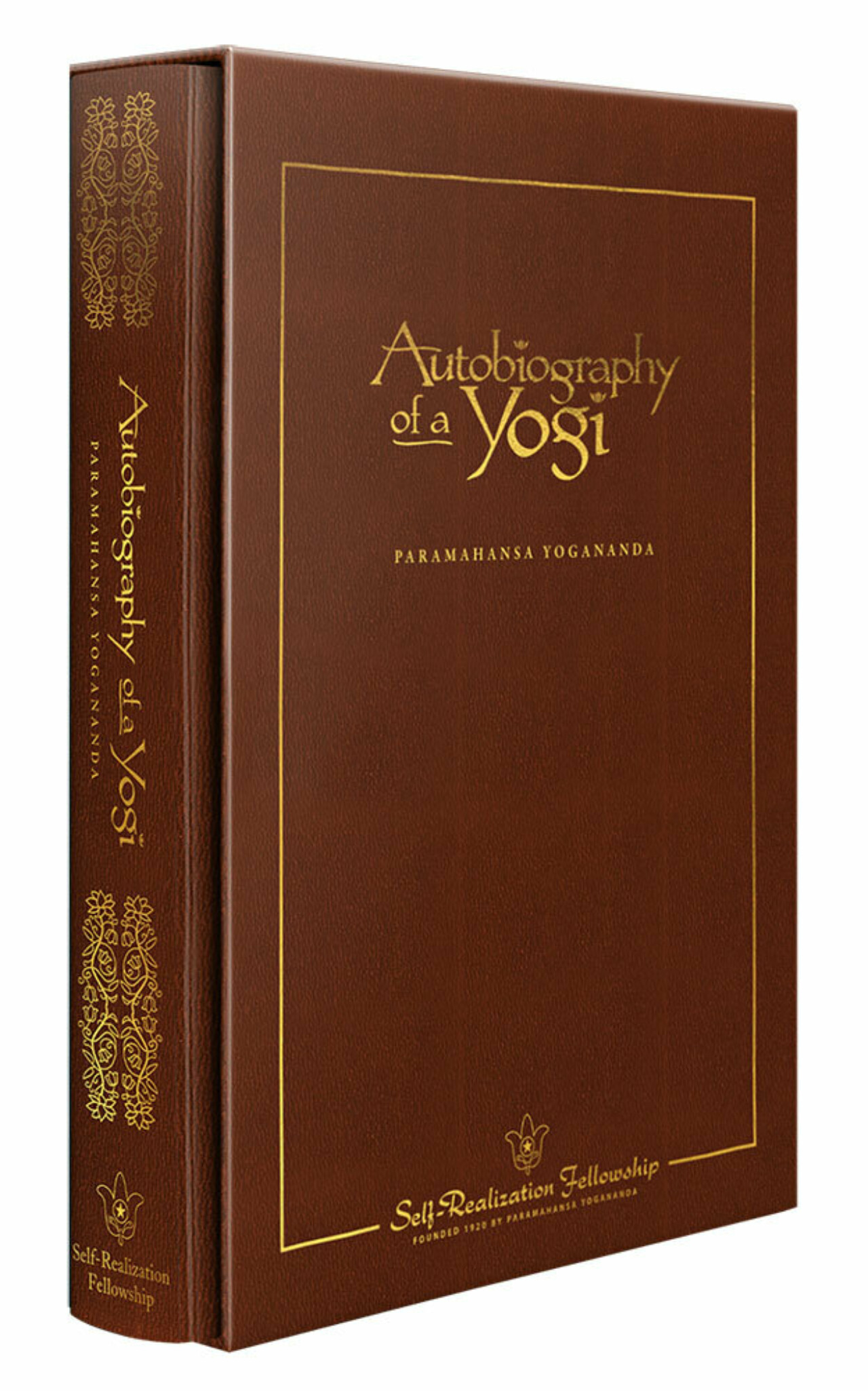
This book will change the lives of millions. It will be my messenger when I am gone.
- Paramahansa Yogananda
2021 marked the 75th anniversary of Paramahansa Yogananda’s Autobiography of a Yogi , one of the world's most acclaimed spiritual classics.
As the life story of Paramahansa Yogananda — who is often referred to as the Father of Yoga in the West — this book has touched the hearts and minds of millions around the globe. Translated into over fifty languages , it has served as an ambassador for India's ancient science of yoga, introducing countless readers to the methods for attaining God-realization that are India's unique and lasting contribution to world civilization.
Hailed as a masterpiece from its first appearance in print in 1946, the book was honored in 1999 as one of “100 Best Spiritual Books of the Century.” Today, this story of a life of unmistakable greatness continues its success in opening to the public a realm of liberating spiritual knowledge previously accessible only to a few.
Explore the Book
An enduring and universal appeal.
“I have been intensely moved,” Sri Yogananda wrote in an Author’s Note to the 1951 edition, “to receive letters from thousands of readers. Their comments, and the fact that the book has been translated into many languages, encourages me to believe that the West has found in these pages an affirmative answer to the question: ‘Has the ancient science of yoga any worthwhile place in the life of the modern man?’”
With the passing years “thousands of readers” became millions, and the enduring and universal appeal of Autobiography of a Yogi has become increasingly apparent. It is still appearing on spiritual and inspirational best-seller lists seventy-five years after it was first published — a rare phenomenon! Available in many translations, it is now being used in colleges and universities all over the world in courses ranging from Eastern philosophy and religion to English literature, psychology, sociology, anthropology, history, and even business management. By any measure, Autobiography of a Yogi has played a major role in introducing the science of yoga to the modern world.
“Paramahansa Yogananda, like Gandhi, brought spirituality into the mainstream of society.”
“Perhaps best known for his Autobiography of a Yogi , which has inspired countless millions around the world,” writes the metaphysical journal New Frontier (October 1986), “Paramahansa Yogananda, like Gandhi, brought spirituality into the mainstream of society. It is reasonable to say that Yogananda did more to put the word ‘yoga’ into our vocabulary than any other person.”
“Yogananda can be said to be the father of yoga in the West....”
The respected scholar Dr. David Frawley, Director of the American Institute of Vedic Studies, writing in the bimonthly journal Yoga International (October/November 1996), states, “Yogananda can be said to be the father of yoga in the West — not the mere physical yoga that has become popular, but the spiritual yoga, the science of Self-realization that is the real meaning of yoga.”
“…an Upanishad of the new age...”
Professor Ashutosh Das, Ph.D., D.Litt., of Calcutta University, declares, “ Autobiography of a Yogi is regarded as an Upanishad of the new age....It has satisfied the spiritual thirst of truth-seekers throughout the world. We in India have watched with wonder and fascination the phenomenal spread of the popularity of this book about India’s saints and philosophy. We have felt great satisfaction and pride that the immortal nectar of India’s Sanatana Dharma, the eternal laws of truth, has been stored in the golden chalice of Autobiography of a Yogi .”
Even in the former Soviet Union, the book apparently made a deep impression on the relative few who had access to it under the communist regime. Justice V.R. Krishna Iyer, former judge of India’s Supreme Court, tells of visiting a town near St. Petersburg (then Leningrad) and asking a group of professors there “whether they had thought about what happens when man dies....One of the professors quietly went inside and came out with a book — Autobiography of a Yogi . I was surprised. In a country ruled by the materialistic philosophy of Marx and Lenin, here is an official of a government institute showing me Paramahansa Yogananda’s book! ‘Please realize that the spirit of India is not alien to us,’ he said. ‘We accept the authenticity of everything recorded in this book.’”
“...a book that opens windows of the mind and spirit.”
“Among the thousands of books that are published each year,” concluded an article in India Journal (April 21, 1995), “there are those that entertain, those that instruct, those that edify. A reader can consider himself fortunate if he finds one that does all three. Autobiography of a Yogi is rarer still—it is a book that opens windows of the mind and spirit.”
“…celebrated as one of the most entertaining and enlightening spiritual books ever written.”
In recent years, the book has been hailed by booksellers, reviewers, and readers alike as one of the most influential spiritual books of modern times. In a 1999 Harper Collins panel of authors and scholars, Autobiography of a Yogi was selected as one of the “100 Best Spiritual Books of the Century.” And in his 50 Spiritual Classics, which was released in 2005, Tom Butler-Bowden wrote that the book was “justifiably celebrated as one of the most entertaining and enlightening spiritual books ever written.”
In the book’s final chapter, Paramahansa Yogananda writes of the profound assurance which has been affirmed by saints and sages of all the world’s religions down through the ages:
“God is Love; His plan for creation can be rooted only in love. Does not that simple thought, rather than erudite reasonings, offer solace to the human heart? Every saint who has penetrated to the core of Reality has testified that a divine universal plan exists and that it is beautiful and full of joy.”
As Autobiography of a Yogi enters its 75th year, it is our hope that all readers of this inspiring work — those who are encountering it for the first time as well as those for whom it has become a long-cherished companion on life’s path — will find their own souls opening to a deeper faith in the transcendent truth that lies at the heart of life’s seeming mysteries.
Origins and Evolution
The writing of the autobiography was prophesied long ago.
The writing of this work had been prophesied long ago. One of the seminal figures in the renaissance of yoga in modern times, the revered nineteenth-century master Lahiri Mahasaya (1828–1895), had foretold: “About fifty years after my passing, an account of my life will be written because of a deep interest in yoga that will arise in the West. The message of yoga will encircle the globe. It will aid in establishing the brotherhood of man: a unity based on humanity’s direct perception of the One Father.”
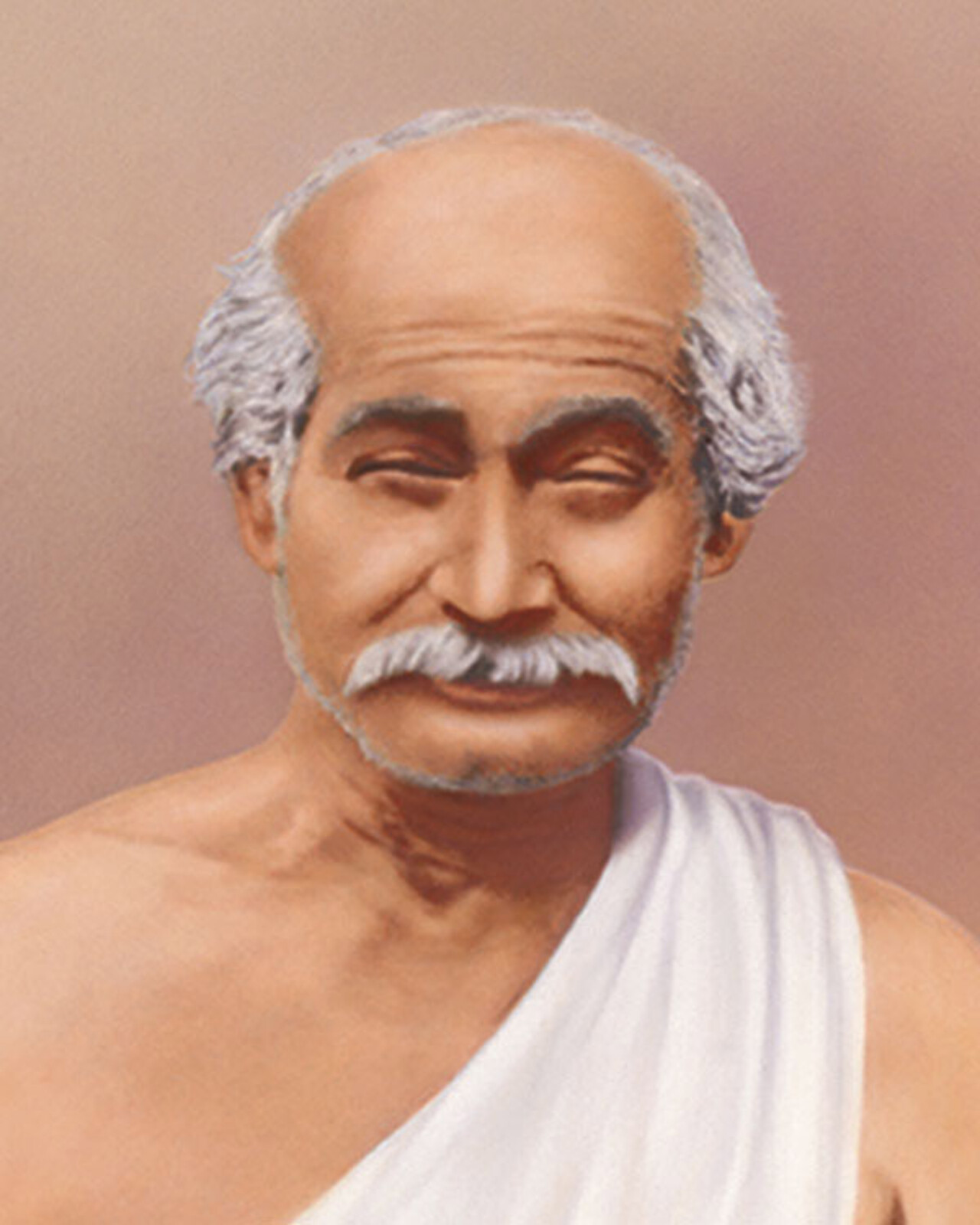
Many years later, Lahiri Mahasaya’s exalted disciple Swami Sri Yukteswar related this prophecy to Sri Yogananda. “You must do your part in spreading that message,” he declared, “and in writing that sacred life.”
It was in 1945, exactly fifty years after Lahiri Mahasaya’s passing, that Paramahansa Yogananda completed his Autobiography of a Yogi , which amply fulfilled both of his guru’s injunctions: providing the first detailed presentation in English of Lahiri Mahasaya’s remarkable life, and introducing to a world audience India’s age-old science of the soul.
An account of my life will be written because of a deep interest in yoga that will arise in the West. The message of yoga will encircle the globe.
Lahiri Mahasaya
The creation of Autobiography of a Yogi was a project that Paramahansa Yogananda worked on over a period of many years. Sri Daya Mata, one of his earliest and closest disciples, recalls:
“When I came to Mount Washington in 1931, Paramahansaji had already begun to work on the Autobiography . Once when I was in his study attending to some secretarial duties, I was privileged to see one of the first chapters he wrote — it was on ‘The Tiger Swami.’ He asked me to save it, and explained that it would be going into a book he was writing. Most of the book was composed later, between 1937 and 1945.”
From June 1935 through October 1936, Sri Yogananda had made a return trip to India (via Europe and Palestine) for a last visit with his guru, Swami Sri Yukteswar. While there, he had compiled much factual data for the Autobiography , as well as stories about some of the saints and sages whom he had known and whose lives he was to describe so memorably in the book. “I had never forgotten Sri Yukteswar’s request that I write the life of Lahiri Mahasaya,” he later wrote. “During my stay in India I was taking every opportunity to contact direct disciples and relatives of the Yogavatar. Recording their conversations in voluminous notes, I verified facts and dates, and collected photographs, old letters, and documents.”
Upon his return to the United States at the end of 1936, he began to spend much of his time at the hermitage that had been built for him in his absence, in Encinitas on the southern California coast. It proved to be an ideal place to concentrate on completing the book he had begun years before.
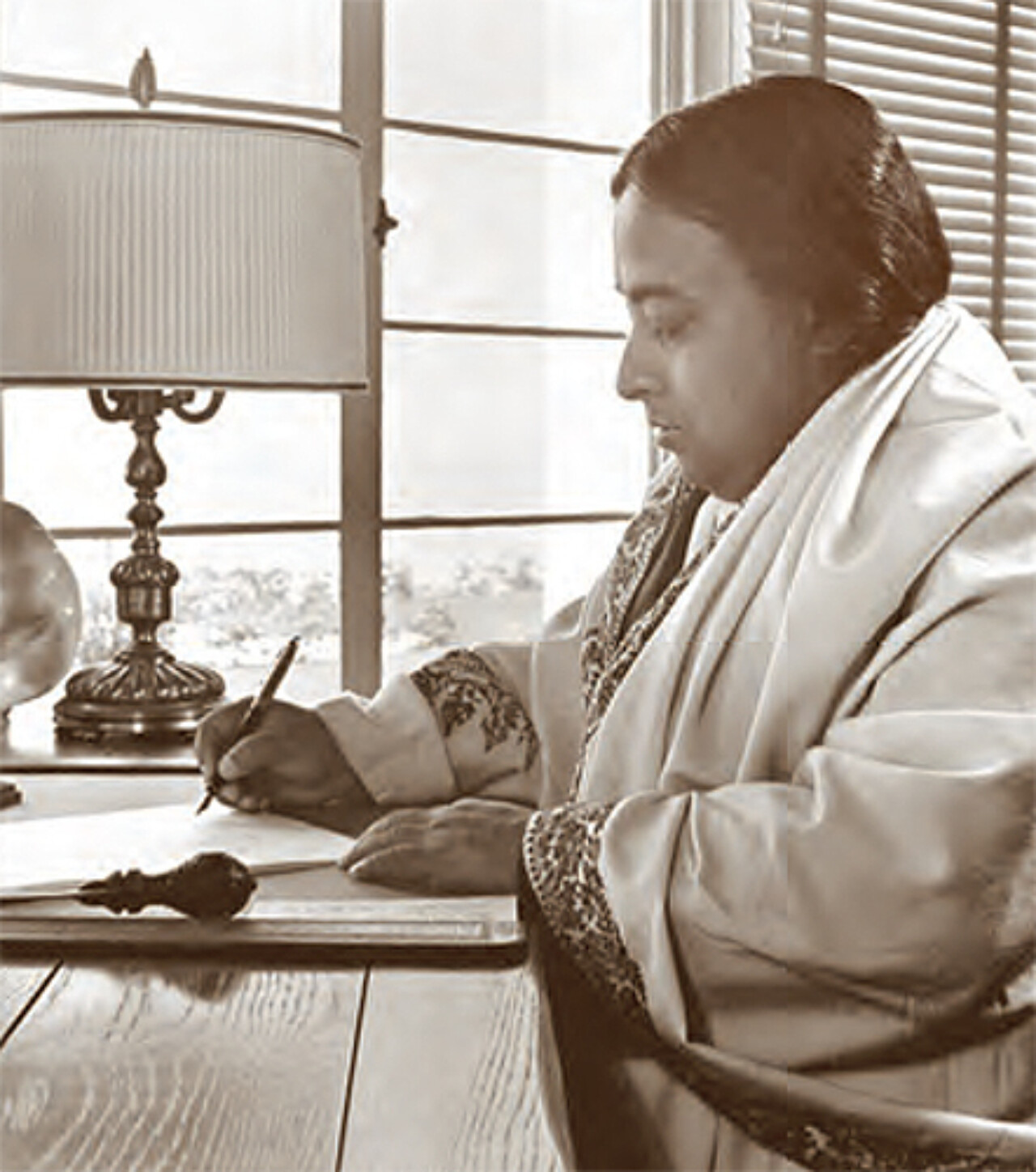
“Still vivid in my memory are the days spent in that peaceful seaside hermitage,” recounts Sri Daya Mata. “He had so many other responsibilities and commitments that he was not able to work on the Autobiography every day; but in general he devoted the evenings to it, and whatever free time he could spare. Beginning around 1939 or ’40, he was able to concentrate full time on the book. And full time it was — from early morning until early morning! A small group of us disciples — Tara Mata; my sister, Ananda Mata; Sraddha Mata; and myself — were present to assist him. After each part was typed, he would give it to Tara Mata, who served as his editor.
“What treasured memories! As he wrote he relived inwardly the sacred experiences he was recording. His divine intent was to share the joy and revelations encountered in the company of saints and great masters and in one’s own personal realization of the Divine. Often he would pause for a time, his gaze uplifted and his body motionless, rapt in the samadhi state of deep communion with God. The whole room would be filled with a tremendously powerful aura of divine love. For us disciples, merely to be present at such times was to be lifted into a higher state of consciousness.
“Finally, in 1945, came the jubilant day of the book’s completion. Paramahansaji wrote the last words, ‘Lord, Thou hast given this monk a large family’; then laid down his pen and joyously exclaimed:
“‘All done; it is finished. This book will change the lives of millions. It will be my messenger when I am gone.’”
Tara Mata’s Role in the Book’s Publication
It then became Tara Mata’s responsibility to find a publisher. Paramahansa Yogananda had met Tara Mata while conducting a series of lectures and classes in San Francisco in 1924. Possessed of rare spiritual insight, she became one of the small circle of his most advanced disciples. He held her editorial abilities in highest esteem, and used to say that she had one of the most brilliant minds of anyone he had ever met. He appreciated her vast knowledge and understanding of India’s scriptural wisdom, and remarked on one occasion: “Excepting my great guru, Sri Yukteswarji, there is no one with whom I have more enjoyed talking of Indian philosophy.”
Tara Mata took the manuscript to New York City. But finding a publisher was not an easy task. As can often be observed, the true stature of a great work may not at first be recognized by those of a more conventional cast of mind. Despite the newly born atomic age having enlarged the collective consciousness of humanity with a growing understanding of the subtle unity of matter, energy, and thought, the publishers of the day were hardly ready for such chapters as “Materializing a Palace in the Himalayas” and “The Saint With Two Bodies”!
For a year, Tara Mata lived in a sparsely furnished, unheated cold-water flat while making the rounds of publishing houses. At last she was able to write with news of success. The Philosophical Library, a respected New York publisher, had accepted the Autobiography for publication. “What [she] has done for this book I cannot begin to describe...,” Sri Yogananda said. “But for her, the book would never have gone through.”
Shortly before Christmas 1946, the long-awaited books reached Mount Washington.
Outpouring of Critical Acclaim
The book was greeted by readers and by the world press with an outpouring of appreciative praise. “There has been nothing before, written in English or in any other Euro language, like this presentation of Yoga,” wrote Columbia University Press in its Review of Religions. The New York Times proclaimed it “a rare account.” Newsweek reported, “Yogananda’s book is rather an autobiography of the soul than of the body....It is a fascinating and clearly annotated study of a religious way of life, ingenuously described in the lush style of the Orient.”
A second edition was quickly prepared, and in 1951 a third. In addition to revising and updating portions of the text, and deleting some passages describing organizational activities and plans that were no longer current, Paramahansa Yogananda added a final chapter — one of the longest in the book — covering the years 1940–1951. In a footnote to the new chapter, he wrote, “Much new material in Chapter 49 has been added to the third edition of this book (1951). In response to requests made by a number of readers of the first two editions, I have answered, in this chapter, various questions about India, yoga, and Vedic philosophy.”
Additional revisions made by Paramahansa Yogananda were included in the seventh edition (1956), as described in a Publisher’s Note to this edition. All of Self-Realization Fellowship’s current editions incorporate Yogananda’s wishes for the final text of the book.
Evolution After the 1946 First Edition
Self-Realization Fellowship’s editions are the only editions that incorporate all of the author’s wishes for the final text of Autobiography of a Yogi — personally conveyed by him to the editor he worked with from 1924 until his passing in 1952, and to whom he entrusted all matters pertaining to the publication of his works.
Readers of Autobiography of a Yogi sometimes inquire about the differences between the current edition and the first edition published in 1946.
Three editions of Paramahansaji’s autobiography appeared during his lifetime. In the third edition, published in 1951, he made significant changes — revising the text thoroughly, deleting material, amplifying various points, and adding a new final chapter, “The Years 1940–1951” (one of the longest in the book). Some further revisions made by him after the third edition could not be incorporated until the publication of the seventh edition, which was released in 1956.
The following Publisher’s Note was printed in the seventh edition of Autobiography of a Yogi , giving the history of the author’s wishes for the book:
“This 1956 American edition contains revisions made by Paramahansa Yogananda in 1949 for the London, England, edition; and additional revisions made by the author in 1951. In a ‘Note to the London Edition,’ dated October 25, 1949, Paramahansa Yogananda wrote: ‘The arrangement for a London edition of this book has given me an opportunity to revise, and slightly to enlarge, the text. Besides new material in the last chapter, I have added a number of footnotes in which I have answered questions sent me by readers of the American edition.’
“Later revisions, made by the author in 1951, were intended to appear in the fourth (1952) American edition. At that time the rights in Autobiography of a Yogi were vested in a New York publishing house. In 1946 in New York each page of the book had been made into an electrotype plate. Consequently, to add even a comma requires that the metal plate of an entire page be cut apart and resoldered with a new line containing the desired comma. Because of the expense involved in resoldering many plates, the New York publisher did not include in the fourth edition the author’s 1951 revisions.
“In late 1953 Self-Realization Fellowship (SRF) bought from the New York publisher all rights in Autobiography of a Yogi . SRF reprinted the book in 1954 and 1955 (fifth and sixth editions); but during those two years other duties prevented the SRF editorial department from undertaking the formidable task of incorporating the author’s revisions on the electrotype plates. The work, however, has been accomplished in time for the seventh edition. ”
All of the changes, deletions, and additions between 1946 and 1956 were made at Paramahansaji’s request. Other editorial revisions — which were in all cases quite minor — were made later, according to guidance given by him before his passing to his longtime editor, Tara Mata, who had worked closely with him for over 25 years and in whom he placed his full trust for the posthumous publication of his writings in accord with his instructions.
Because Paramahansaji clearly foresaw that this book would continue to reach wider and wider audiences as the years went by, he instructed his editors to add — in the way of incidental footnotes, pictures, captions, etc. — whatever might be necessary in order to keep the book up to date.
Changes made since 1956 have consisted of what any publisher would normally do in the way of editorial adjustments in subsequent editions of a book that has remained continually in print for many decades (e.g., updating the list of other books by the author; addition of footnotes deemed of use to current readers — clearly marked as being added by the publisher, not the author; additional photos of the author and his activities; necessary changes to front and back matter, etc.).
Early editions of Autobiography of a Yogi gave the author’s title as “Paramhansa,” reflecting the common Bengali practice of omitting silent or near-silent a’s in spelling. To ensure that the sacred significance of this Veda-based title would be conveyed, in later editions the standard Sanskrit transliteration has been used: “Paramahansa,” from parama , “highest or supreme” and hansa , “swan” — signifying one who has attained highest realization of his true divine Self, and of the unity of that Self with Spirit.
Compared to the 1946 First Edition, Self-Realization Fellowship’s current editions of the Autobiography include an additional 20 pages of photos of Paramahansa Yogananda and other subjects discussed in the book, drawn from the organization’s archives to provide a fuller glimpse of the author and his activities for interested readers.
Stories of Close Disciples
How disciples of paramahansa yogananda found autobiography of a yogi.
It was in December 1946 that the first copies of Autobiography of a Yogi arrived at Self-Realization Fellowship International Headquarters from the printer in New York. On the occasion of the book’s 50th anniversary in 1996, several of Paramahansa Yogananda’s close disciples shared their reminiscences of the day the books arrived and the impact it had on their lives. They were among the first to experience the divine wisdom, love, and transforming vision of life emanating from its pages — pages that since then have changed the lives of millions.
Sri Daya Mata
The writing of Autobiography of a Yogi was a project that took many years of Paramahansaji’s time to complete. When I came to Mt. Washington in 1931, he had already begun work on it. Once when I was in his study attending to some secretarial duties for him I was privileged to see one of the first chapters he wrote — it was about “The Tiger Swami.” Gurudeva asked me to save it because it would be going into a book.
However, the greatest portion of his autobiography was composed during the period 1937–45. Paramahansaji had so many responsibilities and commitments, he was not able to work on his book every day; but in general, he devoted the evenings to it, as well as whatever other free time he was able to put his mind on it. A small group of us — Ananda Mata, Shraddha Mata, and myself — were around him much of that time, helping to type the manuscript. After each part was typed, Gurudeva would give it to Tara Mata, who served as his editor.
One day, while working on his autobiography, the Guru told us: “When I have left this world, this book will change the lives of millions. It will be my messenger when I am gone.”
When the manuscript was finished, Tara Mata went to New York to find a publisher for it. Paramahansaji had great respect for her knowledge and for her editorial abilities, and often praised her publicly. He said: “What [she] has done for this book I cannot begin to describe. Before she was to go to New York she fell violently ill. She left for New York just the same. But for her, the book would never have gone through.”
Gurudeva’s reaction to the completion of the book was joy that no words can express. He inscribed my copy, as he did for many of the other devotees who were here in the ashrams. When I received it, I knew, having helped to type the manuscript, that this was an immortal book — one that for the first time revealed hidden truths which had never before been presented in such a clear and inspirational way. No other author has approached Guruji’s explanation of miracles, reincarnation, karma, the afterlife, and the other wonderful spiritual truths contained in its pages.
What would be his reaction to the book’s renown today? He would be humbly touched that Autobiography of a Yogi has reached into all corners of the earth to people of every culture, race, religion, and age, and that it has been received with tremendous acclaim and enthusiasm throughout these fifty years. Though Guruji never dwelt on his own importance, he certainly did believe in the great value of what he wrote — because he knew he was writing Truth.
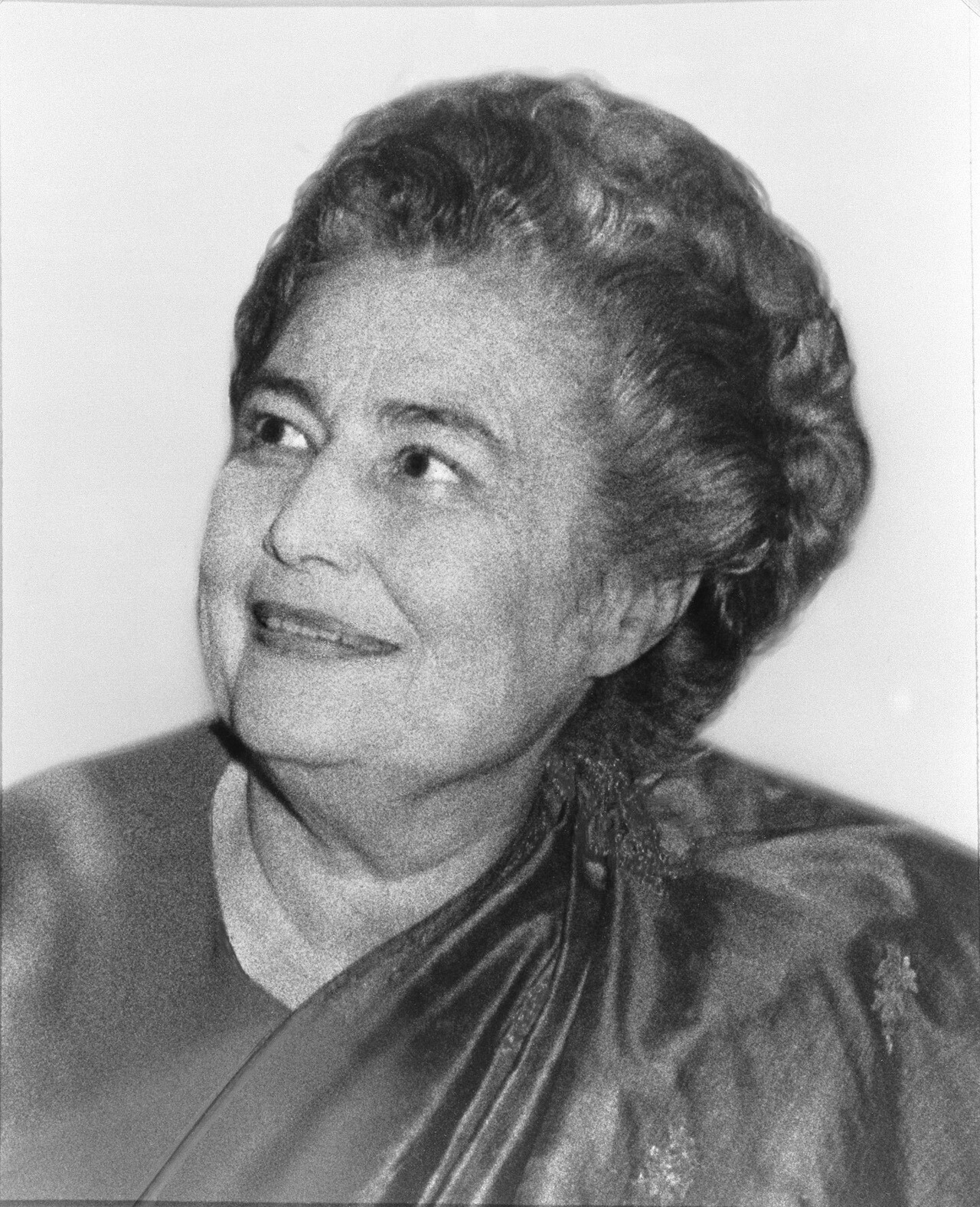
To our Laurie Pratt
“God and the Gurus ever bless you for your valiant & loving part in bringing this book out. P.Y.”
“At last the sacred fragrance of God, of my gurus and the masters have come out through the secret doors of my soul — after unending hazards and ceaseless efforts of Laurie Pratt and other disciples. All faggots of difficulties are burning in the everlasting flame of joy.”
Mrinalini Mata
One evening in the Encinitas hermitage, late in 1946, we younger devotees were busily engaged with our kitchen duties when Gurudeva came through the door. All activity stopped and our attention was fully concentrated on his broad smile and an even more beautiful than usual twinkle in his eyes. His hand was behind his back, concealing “something.” He called for a few others to come and had us line up in front of him. Then he displayed before us the hidden treasure — an advance copy of his book, Autobiography of a Yogi . Midst “Oh’s” and “Ah’s” we could scarcely express our joy to behold at last the long-awaited account of his life among the great saints and sages of India — with which he had so often enthralled us during precious hours in his company. He opened to a few pages, saving for last the illustration of Mahavatar Babaji. Almost breathlessly we offered our reverence and absorbed the blessing we felt to be among the first to glimpse the likeness of our Param-Param-Paramguru.
In early December, we were all summoned to Mt. Washington to participate in the arrival of parcels of books from the publisher, and in preparing them for posting to the many eager devotees — hundreds of back orders. Weeks ahead of time when any of us had free moments we were engaged in typing address labels on one of our old manual typewriters. Huge tables (flat boards on sawhorses) were set up in the office, ready for assembly-line wrapping of each individual book in brown mailing paper off a huge roll, hand-cutting it to just the right size, affixing labels and postage stamps moistened first from wet sponges. No automation or mailing machines in those days! But oh what joy to participate in this momentous event in Self-Realization Fellowship history. The world would know our blessed Master through this sublime ambassador.
In the third-floor sitting room, Gurudeva sat at a desk for hours without a break, autographing every book. The books were removed from the publisher’s shipping cartons, opened, and placed before him in a steady stream as he signed each one — emptying one fountain pen while another was being refilled.
It was late when he summoned me to come upstairs. He was still autographing books. The senior disciples urged him to take some rest, but he refused even to consider it until every book in that shipment was signed with his blessings. He had the most beatific expression on his face, as though a very real part of himself and his love for God were going out to all the world in those printed pages, and it should not be withheld one extra moment.
It was with inexpressible joy that we sat at his feet to meditate in the wee hours of the morning. The Master had handed each of us our personal copy of this treasure, and all other copies had been wrapped for mailing in the morning or packed for sending to his temples in Hollywood and San Diego. Autobiography of a Yogi was on its way to a divine destiny, ultimately to carry the Guru’s blessings and love for God to millions of seeking souls.
Sailasuta Mata
There were just a few of us living in the Encinitas Hermitage when Paramahansaji was writing Autobiography of a Yogi , a project that took him a number of years to complete. I was living there for part of that time.
Guruji did most of the writing of that book in his study at the Hermitage. I remember there were times when he might dictate all night long, and other occasions when it would continue for the entire day or even longer. I was not involved with the secretarial duties like Daya Ma and Ananda Ma, who would sometimes take down his words in shorthand and at other times use the typewriter. My responsibility was mostly cooking their meals so that they could work uninterruptedly!
When Autobiography of a Yogi arrived from the publisher, there was great jubilation. Right away Guruji wanted us to send out his book to all those who had placed advance orders! So after the initial celebration, we were very busy filling the big backlog of orders that had accumulated. Sister Shila and I wrapped many copies, stamped the packages, and got them all ready. Then we brought the car around, opening the trunk and all of the doors. When the car had been completely filled, we drove the parcels of books down to the main post office in Los Angeles. We were delighted: At last Autobiography of a Yogi was going to be available to people everywhere!
Brother Bhaktananda
Shortly after I entered the ashram in 1939, Paramahansaji spoke with a couple of us on the verandah of the Administration Building at Mt. Washington. He remarked to us that God told him he was to write certain books during his lifetime; and when those books were finished, his mission on earth would be over. Autobiography of a Yogi was one of those books. When the Autobiography first came out, I read it from cover to cover in a day, or two — how wonderful and inspiring! I remember thinking that this book will play a major role in promoting interest in Paramahansaji’s teachings. To date we have seen only the tip of the iceberg.
When I met Paramahansa Yogananda in 1943 I was nine years old. My father was a Self-Realization Fellowship member and attended services at the temple in San Diego. In 1947 I read his copy of Autobiography of a Yogi , which Paramahansaji had given him. My father was very unassuming and never tried to influence others with his own beliefs. As a result, he never even showed me the book — I came across it accidentally. It took me a while to read it — I was quite young and the book contained some rather large words! But from the beginning, Autobiography of a Yogi has been a haven for me, a healing balm for my soul....Above all, Autobiography of a Yogi shows that it is possible for us to know God.
I remember my first Christmas in the ashram in 1946. Autobiography of a Yogi was completed, and Paramahansaji gave copies to all of us. How powerfully those pages conveyed our Guru’s vivid and delightful personality — the love and joy we felt in his presence. How uplifted we had been hearing him recount many of those same events personally, and through this book all can share in that.
Sister Parvati
I vividly recall when Autobiography of a Yogi was first released. Some time later I asked Paramahansaji if he would write a little thought in my copy. He wrote, “Find the Infinite hidden on the altar of these pages.” Sometimes when I’ve had a specific need, I have opened the Autobiography to some passage and thought, “I don’t remember ever seeing that before!” But it exactly addresses what I had to deal with at the moment. Though I would not have known where to go in the book to find it, it leaps off the page when I need to see it. I have found that the Master’s counsel is really true — you can find the Infinite hidden on the altar of those pages.
Brother Anandamoy
I was in my early teens when I spent a summer vacation with an aunt and uncle in the suburbs of Winterthur, one of the larger cities in Switzerland. My uncle was a musician, a member of a symphony orchestra. He too was on vacation, which he spent working in his large garden. I helped him. Since they didn’t have any children, my uncle took a great interest in me, and during the garden work there were long “talking sessions.” My uncle, I found, was deeply interested in Eastern philosophy, and I listened with rapt attention to his discourses on karma, reincarnation, the astral and causal planes, and particularly on saints — masters who had attained illumination.
He told me of Buddha and how he had reached this blessed state, and other saints, which kindled in me a deep desire to follow their example. I remember how I used to walk around repeating inwardly again and again: illumination, illumination. Even though I didn’t understand the full meaning of the word, of course, I knew that it was something far greater than what ordinary man had, no matter how accomplished he might be in his material or artistic career. I asked my uncle how one could achieve that state, but the only thing he could say was that one has to meditate. But how, he didn’t know. He said that one has to have a guru who could teach everything. When I expressed my great desire to meet one, he just shook his head and smiled. “My poor boy, there are no gurus in Switzerland!”
So I began to pray for a guru. My yearning for a master was so great that, after I had returned to my hometown, I used to go to the train station, waiting for hours, in the hope that “he” would come. But nothing happened.
After I finished my schooling, I worked in my father’s business for two frustrating years. By then, I had given up my interest in Hindu philosophy, since it seemed hopeless that I could find a guru. I embarked on a career in art, and after three years I was invited to go to the United States to study with Frank Lloyd Wright, the famous architect.
During my first week in America, I visited an uncle who had emigrated to this country in the 1920s. During a conversation he mentioned Hindu philosophy. When I told him that I had been interested in this subject years earlier, his face lit up and he took me to his private study and showed me Autobiography of a Yogi . Pointing to Paramahansa Yogananda’s picture on the cover, he asked: “Have you ever heard of him?” When I said no, he replied, “Greatest man I ever saw. He is a true master!”
“You have seen him?” I cried in utter surprise. “Where is he — not in America!?”
“Yes, he lives in Los Angeles.” Then he told me how he had attended a series of lectures and classes given by Paramahansaji soon after he had come to this country. To think of it, all these years when I had been longing for a guru, my uncle had known a master and his teachings!
I hungrily read the book. That was the first miracle. I was so fascinated that I didn’t even notice that this in itself was a miracle — I didn’t know enough English to read a book in that language. Frank Lloyd Wright too had written an autobiography, but I had tried in vain to read the first couple of pages. It took me a whole additional year of learning English before I was able to read that book. Yet I had been able to read Autobiography of a Yogi from cover to cover.
I knew in my heart that I had found what I wanted, and made up my mind to study the teachings of Paramahansa Yogananda and find God.
It was some months later, after I had learned more English, that I was able to make a trip to Los Angeles, hoping to see the Master. As I entered the grounds of the Mother Center, I felt an overwhelming peace, like nothing I had ever experienced anywhere before. I knew I stood on holy ground.
Sunday morning I attended Paramahansaji’s morning service at the Hollywood Temple. It was the first time I would see him face to face. It was an unforgettable experience. After the service, the Master sat on a chair and most of the congregation went up to greet him. I can’t express in words how I felt as I stood in line. Finally when I stood before him, he took my hand in his and I looked into those deep luminous tender eyes. No word was spoken. But I felt an indescribable joy coming into me through his hand and eyes.
I left the temple and walked in a daze along Sunset Boulevard. I was so intoxicated with joy that I couldn’t walk straight. I tottered like a drunkard. Not only that, but I couldn’t contain my joy within, and kept laughing out loud. People on the sidewalk turned and stared; and those walking toward me moved off to the side, shaking their heads in disgust over what they assumed was public drunkenness on Sunday morning. I didn’t care. I had never been so happy in my life.
Not long after this experience, I entered the Self-Realization Fellowship ashram as a monk.
Brother Premamoy
A monastic disciple of Paramahansa Yogananda for more than thirty-five years, Self-Realization Fellowship minister Brother Premamoy was responsible for the spiritual training of young monks of the SRF monastic communities until his passing in 1990. To them he recounted this story.
Brother Premamoy was born in Slovenia. Because of his family connections with royalty and others of influence, after the Communist takeover of his native land at the end of World War II he was forced to flee. In 1950, the U.S. Department of State invited him to immigrate to America.
Just before sailing to New York in the fall of 1950, Brother Premamoy was given a farewell gift by an old friend of the family, Evelina Glanzmann. The present’s shape led him to assume it was a box of candy, and on board the ship he opened it to share with fellow passengers. To his surprise, the package was not candy, but a book — Autobiography of a Yogi .
Even though touched by the gift, Brother did not immediately feel inclined to read it. Though he had been a voracious reader when younger, those days were over (he later said that he had read more books before the age of fifteen than he read for the entire rest of his life). Also, he was very familiar with Eastern philosophy, having fallen in love with the Bhagavad Gita when a teenager, and memorizing most of it. Now, seeing the subject matter of this gift book, his first reaction was, “I’m not going to read this — I don’t want to get hooked!”
In America, he became involved in various business undertakings, and was eventually offered a position as personal assistant to Dag Hammarskjöld, Secretary General of the United Nations. (He declined the position before coming to California.) Months went by — and the Autobiography remained on the shelf, unread, at Brother’s home in New York. In the meantime, Mrs. Glanzmann (who was the translator of the Italian edition of the Autobiography ) had been asking her friend’s opinion of the book. Still Brother Premamoy did not venture into its pages. Finally Mrs. Glanzmann wrote words to the effect: “Say you like it or say you don’t; but say something!” In a pensive mood — it happened to be his birthday, March 6, and he was pondering what to do with his life — he picked up the book and started to read.
Spellbound, he finished the entire book in one sitting. Recognizing that the author had spiritual insight beyond that of anyone he had ever encountered, Brother decided to write to Paramahansa Yogananda.
Little did Brother Premamoy know that as he mailed the letter, the Guru was living the last day of his earthly life.
Brother Premamoy learned of the Guru’s passing some time later, when Sri Daya Mata replied to his letter. Several months passed; Brother was unable to get the thought of the book and its author out of his mind, and that summer he decided to drive to Los Angeles to learn more about Paramahansaji’s teachings. As he walked onto the grounds of Self-Realization Fellowship headquarters for the first time, he was immediately approached by a smiling stranger. With a radiant smile, the man affectionately embraced him as if he were an old friend — long expected and most welcome. No words were exchanged, and it was only later that Brother was formally introduced to his new “old friend” — Rajarsi Janakananda, president of the society!
Thus, the book that Paramahansaji spoke of as his “ambassador” performed its magic on one more soul — for from that day on, the course of Brother Premamoy’s life was set.
Sister Shanti
It was 1952, and I was employed as secretary to the assistant manager at the Ambassador Hotel on Wilshire Boulevard in Los Angeles: a fascinating job in an elite setting where I met a number of world-renowned personalities. But little did I know the impact upon my life the sound of one name would make when spoken in my ear.
On March 6, the secretary of a motion picture producer called the hotel and asked that a message be delivered to Paramahansa Yogananda. The moment I heard that name, a huge “gong-bell” rang in my chest; my head swam, joy welled up in my heart and mind, and I couldn’t even walk straight as I made my way to the reservations desk to arrange for the message delivery. I was told that no one of that name was registered at the hotel, although the Indian Ambassador and his retinue were currently in residence. All the way back to my office the name kept revolving in my consciousness and I became more and more filled with love and joy. After a short time the motion picture producer called and asked, “What name did my secretary give you?” I told him “Paramahansa Yogananda” and he exclaimed, “That’s what I thought I heard him say! That’s not the name I gave him. He doesn’t know why he said that!”
The rest of that day I remained in a strange state of inner awareness and experienced a deep sense of connectedness to that name. Then came March 7, the fateful day of Paramahansa Yogananda’s mahasamadhi . I read about it in the paper and felt that I had lost my best friend. It was devastating! It seemed my life was suddenly over. I kept thinking, I’ve missed him! I’ve waited all my life for him and I missed him! But I didn’t really know what I meant because I wasn’t looking for a teacher or a path. Even so, in the depths of my consciousness I knew it to be true, that I had missed the most important person in my existence.
From that moment on my well-ordered, rather glamorous life no longer suited me. I abruptly canceled important plans, stopped seeing people I knew and started seeking through books. It never occurred to me to see if Paramahansa Yogananda had ever written a book; I simply felt that he was gone and I had missed him. After reading four metaphysically oriented volumes which did not satisfy the depth of my need, I was again searching through the same row of books in the Hollywood Public Library with my mother, who had caught some of the fire that was burning within me. After almost passing the first section, which I felt I had already thoroughly perused, a book fell off the top shelf, hit me on the head, and bounced onto the floor. My mother picked it up and gasped as she turned it toward me — Paramahansa Yogananda’s Autobiography of a Yogi . There before me was the name my heart was reaching for, and the face with eyes that penetrated to the soul!
I read it at night and she read it while I was at work. “Reading” is perhaps inadequate to describe the way we engrossed ourselves in the experience of entering the world of Truth. The origin of life, discipleship, the dispensation of Kriya Yoga — all were made clear in Autobiography of a Yogi .
We attended a service at the Hollywood Temple, which overwhelmed me with the same “presence” that had been so dynamic the morning I first heard the Guru’s name spoken on the telephone. After the service Meera Mata was very gracious in receiving us and after a few moments suggested that I go to Mt. Washington Mother Center and meet her daughter, Mrinalini Mata. We did go and learned about the monastic order, and I was “captured” for the third time — first by Paramahansa Yogananda, second by Autobiography of a Yogi , and now, by the ideal of a life of renunciation devoted to God alone.
After recounting the story about the effect upon me of hearing Paramahansaji’s name on March 6, I learned he had been at the hotel on that morning attending a breakfast for the Ambassador from India, His Excellency Binay R. Sen. That breakfast took place in the room next to my office. The Master was sitting just on the other side of the wall from my desk at the time I received the call and heard his name.
The Guru is calling all of “his own” through his tremendous autobiography. Some of us just take a little too long to respond and have to be hit over the head, as did I! But how blessed is each one of the millions who hears his “voice” and answers his clarion call.
Notable Comments and Reviews
Comments on autobiography of a yogi.
“As an eyewitness recountal of the extraordinary lives and powers of modern Hindu saints, the book has an importance both timely and timeless....His unusual life document is certainly one of the most revealing…of the spiritual wealth of India ever to be published in the West.” — W. Y. Evans-Wentz, M.A., D.Litt., D.Sc., renowned scholar and author of many books on Eastern religion
“I am grateful to you for granting me some insight into this fascinating world.” — Thomas Mann, Nobel laureate
“Few books…have had greater impact on popular theology than Paramahansa Yogananda's Autobiography of a Yogi .” — Phyllis A. Tickle, Author, God-Talk in America
“In [Yogananda's] celebrated Autobiography of a Yogi , he offers a stunning account of the 'cosmic consciousness' reached on the upper levels of yogic practice, and numerous interesting perspectives on human nature from the yogic and Vedantic points of view.” — Robert S. Ellwood, Ph.D., Chairman, School of Religion, University of Southern California
“ Autobiography of a Yogi is justifiably celebrated as one of the most entertaining and enlightening spiritual books ever written." — Tom Butler-Bowdon, Author of 50 Spiritual Classics: Timeless Wisdom from 50 Great Books of Inner Discovery, Enlightenment & Purpose
“One of the most charmingly simple and self-revealing of life-stories…a veritable treasure-house of learning. The great personalities one meets in these pages…return to memory as friends endowed with rich spiritual wisdom, and one of the greatest of these is the God-intoxicated author himself.” — Dr. Anna von Helmholtz-Phelan, Professor of English, University of Minnesota
“Decade after decade, Autobiography of a Yogi has been one of our best-selling books. While other books come and go, it sustains because critical inquiry over time has shown that it opens the way poignantly and sublimely to spiritual fulfillment." — Bodhi Tree Bookstore, Los Angeles
“I keep stacks of Autobiography of a Yogi around the house, and I give it out constantly to people. When people need ‘regrooving,’ I say read this, because it cuts to the heart of every religion.” — George Harrison
“You would be hard-pressed to find anyone on the spiritual path whose life has not been influenced by this profound work of literature. It started me in a path of yoga, meditation, and self-exploration that has continued until this day.” — Jack Canfield, co-creator of the Chicken Soup for the Soul® series
“ Autobiography of a Yogi is regarded as an Upanishad of the new age....It has satisfied the spiritual thirst of hundreds of thousands of truth-seekers throughout the world. We in India have watched with wonder and fascination the phenomenal spread of the popularity of this book about India's saints and philosophy. We have felt great satisfaction and pride that the immortal nectar of India's Sanatana Dharma, the eternal laws of truth, has been stored in the golden chalice of Autobiography of a Yogi ." — Dr. Ashutosh Das, M.A., Ph.D., D.Litt., Professor, Calcutta University
“There are many books in Western tongues that expound Indian philosophy and particularly Yoga, but none other reveals to us with such candor the experiences of one who embodies and lives these principles.” — Dr. Kurt F. Leidecker, Professor of Philosophy, University of Virginia
"I met Paramahansa Yogananda on two occasions in the 1930s as a boy....Twenty years later someone gave me Autobiography of a Yogi ....The moment I started reading that book, it did something to me that I can't describe. I have read many books on yoga, by yogis; but I was never impressed as with this book. It has some magic in it." — Ravi Shankar, Indian classical musician
“The book I most wish I'd written is the Autobiography of a Yogi by Paramahansa Yogananda, because then I would have had all of the fabulous experiences he described growing up in India in the early part of the century. Who would not want to have known genuine gurus and living saints?" — Andrew Weil, M.D., Health expert and author, Eight Weeks to Optimum Health
"For those interested in learning about Eastern philosophy and meditation techniques....a book that enriched my life immeasurably, and remains the favorite of many thousands, [is] Autobiography of a Yogi....[Paramahansa Yogananda] was a prolific writer and an intensely devotional monastic and his autobiography is one of the most compelling books available today." — Cate Tuttle, San Diego Union-Tribune
Purchase Your Copy
Fifty editions of Autobiography of a Yogi , displayed by SRF monastics and employees at the SRF Publications Center
Paperback Edition
Paperback Edition available on the SRF Bookstore
Audiobook available on the SRF Bookstore
eBook available on the SRF Bookstore
Autobiography of a Yogi is also available in:
- Quality Paperback
- Large Print Edition
- Deluxe Edition (coming soon)
Available on the SRF Bookstore
Chinese (Simplified)
Chinese (traditional), indian - 15 languages.
- Newsletters
- Best Industries
- Business Plans
- Home-Based Business
- The UPS Store
- Customer Service
- Black in Business
- Your Next Move
- Female Founders
- Best Workplaces
- Company Culture
- Public Speaking
- HR/Benefits
- Productivity
- All the Hats
- Digital Transformation
- Artificial Intelligence
- Bringing Innovation to Market
- Cloud Computing
- Social Media
- Data Detectives
- Exit Interview
- Bootstrapping
- Crowdfunding
- Venture Capital
- Business Models
- Personal Finance
- Founder-Friendly Investors
- Upcoming Events
- Inc. 5000 Vision Conference
- Become a Sponsor
- Cox Business
- Verizon Business
- Branded Content
- Apply Inc. 5000 US
Inc. Premium

Steve Jobs's Secret to Greatness: Yogananda
The story of the spiritual teacher who was a silent force in the life of the most important entrepreneur of our times..

Steve Jobs planned every detail of his own memorial service, held at Stanford University in October 2011, including the brown box each attendee received as a farewell gift. One of those attendees was Mark Benioff, CEO of Salesforce.com, and two years later at a TechCrunch Disrupt conference he recounted his feelings at the moment when he opened the box: "This is going to be good," he recalled. "I knew that this was a decision [Steve] made, and whatever it was, it was the last thing he wanted us all to think about."
The box contained the book Autobiography of a Yogi by Paramahansa Yogananda . Benioff continued: "Yogananda...had this book on self-realization.... [Steve's] last message to us was that here is Yogananda's book.... Actualize yourself.
"I look at Steve as a very spiritual person," he added. "[Steve] had this incredible realization--that his intuition was his greatest gift and he needed to look at the world from the inside out."
This inner-oriented perspective may be getting lost not only to entrepreneurs, but to modern practitioners of physical yoga too. As the world celebrates the first International Yoga Day today, it is valuable for entrepreneurs and yogis alike to step back from the unending pursuit of outer results to explore Jobs's and Yogananda's message of self-realization. What possibilities might freshly emerge in your search for success--in work and in life--if you too look at the world from the inside out?
Yoga, a discipline from India that is so ancient in its roots that you can credit it only to unknown truth-seekers from some glorious past era, has an outer form that has seized our collective imagination: For 30 minutes every day, disconnect from the world, take your body through an array of yoga poses, breathe deeply, keep the mind focused, and presto! You will emerge relaxed, rejuvenated, and ready again to re-engage with the relentless pace of life.
By all accounts, yoga is one of modern civilization's great movements. In the U.S. alone, more than 20 million people today are pursuing yoga--one of every 10 adults. This yoga revival is in direct response to an increased hunger for physical and mental well-being, and a growing suspicion that there's more to the pursuit of happiness than the material accoutrements of modern civilization. A panoply of yoga instructors have arrived to offer their own twists to ancient poses. Western inventiveness has flourished in the bountiful soil of yoga; today, some instructors are even offering doga--yoga for your dog.
Yoga's deeper purpose: Inner transformation.
But Jobs was on a quest for something altogether more powerful than stress-reduction, toning, and fitness. He was seeking the kind of inner transformation that many practitioners sense yoga is inviting them to embark on, but don't know where it will take them or how to get there.
For this deeper dive, you can turn to the Yoga Sutras of Patanjali, one of the authoritative and few-surviving ancient texts on yoga. Patanjali teaches that "yoga" means "union"--the dissolving of one's individual self in the larger ocean of consciousness that pervades the universe--and that to help us achieve this union is yoga's real purpose. Now you might think: "What is this 'universal consciousness' that Patanjali is talking about? And how can I ever get there?"
And that may be why Jobs, in his own quest for higher consciousness, turned to Yogananda.
Yogananda's story is an inspiring lesson in spiritual entrepreneurship. Born in 1893 in Gorakhpur, India, he alighted on American soil at the young age of 27 with little money in his pocket but with a firm resolve to reawaken humanity to the power of yoga for inner transformation. Over the next few years he brought this message to packed audiences of thousands in all major U.S. cities, at Carnegie Hall in New York City, for example, dressing this ancient teaching in a practical modern form he called self-realization--a journey he characterized as transcending your individual self (ego) and realizing and reclaiming your true universal self (soul). As the American people were being buffeted by the thunderous wrath of two world wars and a major depression, he exhorted them to practice yoga so they could discover that the spiritual anchorage they were seeking was already with them--in fact, it was within them. The successful yogi, he stated, "can stand unshaken amidst the crash of breaking worlds."
It is no wonder that many accomplished men and women of Yogananda's era took to his teaching, including the entrepreneur George Eastman , founder of Kodak; the acclaimed opera singer Amelita Galli-Curci ; the tenor Vladimir Rosing ; and the plant scientist Luther Burbank . Even U.S. president Calvin Coolidge invited Yogananda to the White House for a personal audience. Today he is recognized among yoga experts as the father of yoga in the West.
Great teachers look into the vast beyond and then craft their message to speak not just to their immediate audience but to future generations as well. As early as 1920, Yogananda recognized that yoga would be a boundless fountain to quench people's growing thirst for meaning, authenticity, and a personal experience of truth. So, with an entrepreneurial flair not typical among spiritual teachers, he laid the foundation of an institution, Self-Realization Fellowship (SRF), to ignite the inner flame of yoga in communities worldwide. He once said, "I don't use religion for business but I use business principles in religion." Today, there are hundreds of SRF meditation groups and centers around the world that serve tens of thousands of members. He also worked to develop living exemplars of his teachings by setting up a monastic order within SRF that now includes more than 250 monks and nuns dedicated to their own pursuit of soul-unfoldment and to serving his organization's mission.
The journey to self-realization: Yogananda's practical techniques.
Yogananda's teachings don't simply stop at the idea of universal consciousness. He correctly anticipated the growing hunger among spiritual seekers for direct personal experience of the universal consciousness that the masters of yoga, and indeed mystics of every religious tradition, describe. He therefore synthesized a set of powerful but practical techniques to guide truth-seekers on the spiritual path all the way to the ultimate union, drawing on the eight steps laid out by Patanjali in the Yoga Sutras.
The modern conception of yoga--with its emphasis on outer transformation--is based on the third of Patanjali's eight steps, "asana." Asana emphasizes physical fitness for the purpose of getting the body ready for the stillness that is required for the inner journey taken in the subsequent steps. But prior even to asana are Patanjali's first two steps of "yama" and "niyama"--principles to guide one's everyday conduct and to prepare oneself for inner realization. Yoga emphasizes the importance of self-discipline as a foundation for harmonious physical, mental, and spiritual development.
Yogananda's particular genius was showing the modern applicability of these ancient principles, attuning himself to an audience who aspired as much to outer success as inner growth by delivering talks on topics like "The Science of Healing" and "The Art of Getting What You Want." In that regard, he was a forerunner to 21st-century psychologists, physicians, psychotherapists, and neuroscientists who are generating powerful scientific findings on human nature and well-being--all aligned with Yogananda's teachings on consciousness, thoughts, emotions, habits, and brain wiring.
Patanjali's final five steps beyond asana relate to a progressive deepening of the seeker's journey toward realization of the universal self, with meditation providing the pathway. However, Patanjali's text on these final five steps is agonizingly cryptic, with no guidance on how to execute them. To fill this void, Yogananda, ever the spiritual innovator, introduced the West to an advanced but long-lost ancient technique of meditation, Kriya Yoga. Kriya, he said, offered the ultimate journey of inner transformation, helping practitioners tap into an ever-expanding love and ever-deepening joy that would spring from within. That, he asserted, was man's true nature--a perfection that represents our permanent state of self within, even as it is so elusive to capture without.
Kriya "works like mathematics," he stated, emphasizing the empirical, scientific nature of this technique. Through regular practice, he claimed, Kriya will change the neural pathways in the brain. Really, you might wonder? Can the act of mindful focusing and of interiorizing our consciousness actually bring about physical changes in the brain? Very few scientists at Yogananda's time would have been comfortable with his claims. Yet today revolutionary new findings in neuroscience are showing that meditation does in fact bring favorable changes in the neural pathways of the brain. Scientific laboratories are now stumbling into truths experienced by yogis across the ages in, as Yogananda would say, the inner laboratories of their personal experience.
And what would be the markers that people could look for to assess their inner progress? Lower stress? Greater peace? He had begun his own quest for self-realization very early in life, a story vibrantly captured in the critically acclaimed 2014 documentary Awake: The Life of Yogananda . His youthful search culminated in his master Sri Yukteswar giving him the monastic name "Yogananda," which means "bliss through yoga." True to his name, he exhorted truth-seekers to savor the early rewards of peace and well-being, but to then seek out the ultimate prize: eternal bliss, universal consciousness. "When by constant practice of Kriya, the consciousness of [the] blissful state of the spiritual self becomes real, we find ourselves always in the holy presence of the blissful God in us." God, to Yogananda, was thus not an external force to be idolized and appropriated by any particular religion, but an inner force to be awakened to and realized.
To some, the yogic pursuit of inner perfection may appear a little selfish. Shouldn't we be solving the world's most vexing problems, rather than withdrawing into blissful inner communion? In fact, one time, when Yogananda sat still, absorbed in a particularly blissful state of consciousness, his spiritual master admonished him: "You must not get overdrunk with ecstasy. Much work yet remains for you in the world." So Yogananda learned that this choice between outer service and inner joy represents a false dichotomy. The yoga he taught emphasizes balancing service with meditation, and highlights the expansion of consciousness that comes when we are able to go beyond our human self and open ourselves up, through inner realization, to a deeper connection with every living being--in fact, with every atom in the universe. "When the 'I' shall die, then shall I know who am I," he stated.
How Steve Jobs approached success from the inside out.
Yogananda's teaching of universal consciousness strongly appealed to Steve Jobs, who had a self-professed hunger to "make a dent in the universe." At the TechCrunch conference in September 2013, Mark Benioff said: "[Yogananda's book] gives tremendous insight into not just who [Jobs] was but also why he was successful, which is that he was not afraid to take that key journey [toward self-realization]. It is for entrepreneurs and for people who want to be successful in our industry a message that we need to embrace and vest ourselves in."
Since Yogananda's passing in 1952, many teachers have followed his trailblazing path to bring yoga to our world, helping make it a fixture in popular culture as it continues to take hold with young and old, the elite and the ordinary, the spiritualists and the atheists. What distinguishes Yogananda from these subsequent emissaries is not simply that he paved the way for the modern yoga movement, but that from the outset he focused far beyond physical exercises and shone a powerful and practical torchlight on the path to yoga's true purpose: actualizing the infinite potentials within us all. Perhaps that is why his Autobiography of a Yogi was the only book Jobs downloaded on his iPad--and, after first encountering the book as a teenager, went back and reread once every year.
On this first International Yoga Day, let's tip our hats to the teacher who first introduced the modern world to the transformative power of yoga as a timeless inner discipline, and who was such a silent force in the life of the greatest entrepreneur of our times. As you roll out your yoga mat, get into your favorite yoga pose, and feel a gentle zephyr of peace sweep over you, perhaps you can take pause to wonder at what experiences in consciousness may lie just beyond your present reach if you also embark on yoga's fuller, inner journey toward self-realization. Yogananda would have called those experiences "undreamed of possibilities."
And as you get closer to realizing your true self within, you may find that you, too, are ready to make a dent in the universe.
A refreshed look at leadership from the desk of CEO and chief content officer Stephanie Mehta
Privacy Policy
Ask the publishers to restore access to 500,000+ books.
Internet Archive Audio

- Grateful Dead
- Old Time Radio
- 78 RPMs and Cylinder Recordings
- Audio Books & Poetry
- Computers, Technology and Science
- Music, Arts & Culture
- News & Public Affairs
- Spirituality & Religion
- Radio News Archive

- Flickr Commons
- Occupy Wall Street Flickr
- NASA Images
- Solar System Collection
- Ames Research Center

- All Software
- Old School Emulation
- MS-DOS Games
- Historical Software
- Classic PC Games
- Software Library
- Kodi Archive and Support File
- Vintage Software
- CD-ROM Software
- CD-ROM Software Library
- Software Sites
- Tucows Software Library
- Shareware CD-ROMs
- Software Capsules Compilation
- CD-ROM Images
- ZX Spectrum
- DOOM Level CD

- Smithsonian Libraries
- FEDLINK (US)
- Lincoln Collection
- American Libraries
- Canadian Libraries
- Universal Library
- Project Gutenberg
- Children's Library
- Biodiversity Heritage Library
- Books by Language
- Additional Collections

- Prelinger Archives
- Democracy Now!
- Occupy Wall Street
- TV NSA Clip Library
- Animation & Cartoons
- Arts & Music
- Computers & Technology
- Cultural & Academic Films
- Ephemeral Films
- Sports Videos
- Videogame Videos
- Youth Media
Search the history of over 866 billion web pages on the Internet.
Mobile Apps
- Wayback Machine (iOS)
- Wayback Machine (Android)
Browser Extensions
Archive-it subscription.
- Explore the Collections
- Build Collections
Save Page Now
Capture a web page as it appears now for use as a trusted citation in the future.
Please enter a valid web address
- Donate Donate icon An illustration of a heart shape
Autobiography Of A Yogi By Paramahansa Yogananda
Bookreader item preview, share or embed this item, flag this item for.
- Graphic Violence
- Explicit Sexual Content
- Hate Speech
- Misinformation/Disinformation
- Marketing/Phishing/Advertising
- Misleading/Inaccurate/Missing Metadata
Autobiography of a Yogi is an autobiography of Paramahansa Yogananda (5 January 1893–7 March 1952) first published in 1946. Paramahansa Yogananda was born as Mukunda Lal Ghosh in Gorakhpur, India , into a Bengali Hindu family.
Autobiography of a Yogi introduces the reader to the life of Paramahansa Yogananda and his encounters with spiritual figures of both the Eastern and the Western world. The book begins with his childhood family life, to finding his guru, to becoming a monk and establishing his teachings of Kriya Yoga meditation. The book continues in 1920 when Yogananda accepts an invitation to speak in a religious congress in Boston, Massachusetts , USA . He then travels across America lecturing and establishing his teachings in Los Angeles, California . In 1935, he returns to India for a yearlong visit. When he returns to America, he continues to establish his teachings, including writing this book.
The book is an introduction to the methods of attaining God-realization and to the spiritual wisdom of the East , which had only been available to a few in 1946. The author claims that the writing of the book was prophesied long ago by the nineteenth-century master Lahiri Mahasaya (Paramguru of Yogananda) also known as the Yogiraj and Kashi baba . Before becoming a yogi, Lahiri Mahasaya's actual name was Shyama Charan Lahiri .
It has been in print for seventy years and translated into over fifty languages by Self-Realization Fellowship . [2] It has been highly acclaimed as a spiritual classic including being designated by Philip Zaleski , while he was under the auspices of HarperCollins Publishers, as one of the "100 Most Important Spiritual Books of the 20th Century." [3] [4] [5] It is included in the book 50 Spiritual Classics: Timeless Wisdom from 50 Great Books of Inner Discovery, Enlightenment and Purpose by Tom Butler-Bowdon . [6] According to Project Gutenberg, the first edition is in public domain and at least five publishers are reprinting it and four post it free for online reading.
plus-circle Add Review comment Reviews
6,018 Views
59 Favorites
DOWNLOAD OPTIONS
For users with print-disabilities

IN COLLECTIONS
Uploaded by 013_THW on February 23, 2021
Autobiography of a Yogi – Read Online
The book that sparked a spiritual revolution.
Autobiography of a Yogi : a first-hand account of the life experiences of Paramhansa Yogananda, a spiritual master, this book has sold millions of copies and is beloved around the world by those interested in yoga and spirituality.
Available in 19 Languages
Kindle Edition , only $14.99 Online edition , free
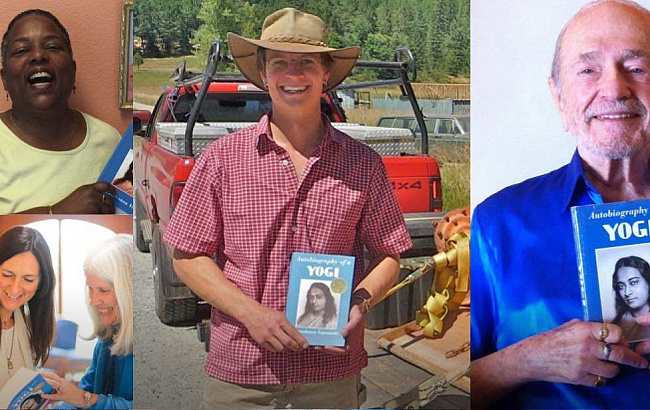
About This Edition
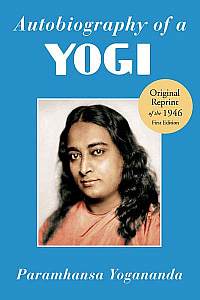
This is the original edition of Autobiography of a Yogi , just as Yogananda wrote it, without the hundreds of changes made to editions published after Yogananda’s passing in 1952.
Utmost care has been taken to make this the most accurate reprint ever published.
Table of Contents
- My Parents and Early Life
- My Mother’s Death and the Mystic Amulet
- The Saint With Two Bodies
- My Interrupted Flight Toward the Himalayas
- A “Perfume Saint” Displays His Wonders
- The Tiger Swami
- The Levitating Saint
- India’s Great Scientist, J. C. Bose
- The Blissful Devotee and His Cosmic Romance
I Meet My Master, Sri Yukteswar
Two penniless boys in brindaban.
- Years in My Master’s Hermitage
- The Sleepless Saint
- An Experience in Cosmic Consciousness
- The Cauliflower Robbery
- Outwitting the Stars
- Sasi and the Three Sapphires
- A Mohammedan Wonder-Worker
- My Master, in Calcutta, Appears in Serampore
- We Do Not Visit Kashmir
- We Visit Kashmir
- The Heart of a Stone Image
- I Receive My University Degree
- I Become a Monk of the Swami Order
- Brother Ananta and Sister Nalini
- The Science of Kriya Yoga
- Founding a Yoga School in Ranchi
- Kashi, Reborn and Rediscovered
Rabindranath Tagore and I Compare Schools
- The Law of Miracles
- An Interview with the Sacred Mother
- Rama is Raised from the Dead
- Babaji, the Yogi-Christ of Modern India
- Materializing a Palace in the Himalaya
- The Christlike Life of Lahiri Mahasaya
- Babaji’s Interest in the West
- I Go to America
- Luther Burbank — A Saint Amidst the Roses
- Therese Neumann, the Catholic Stigmatist
- I Return to India
- An Idyl in South India
- Last Days with My Guru
The Resurrection of Sri Yukteswar
- With Mahatma Gandhi at Wardha
- The Bengali “Joy-Permeated Mother”
- The Woman Yogi Who Never Eats
- I Return to the West
- At Encinitas in California
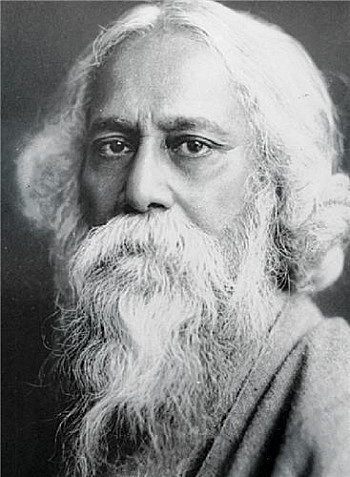
About two years after founding the Ranchi school, I received...
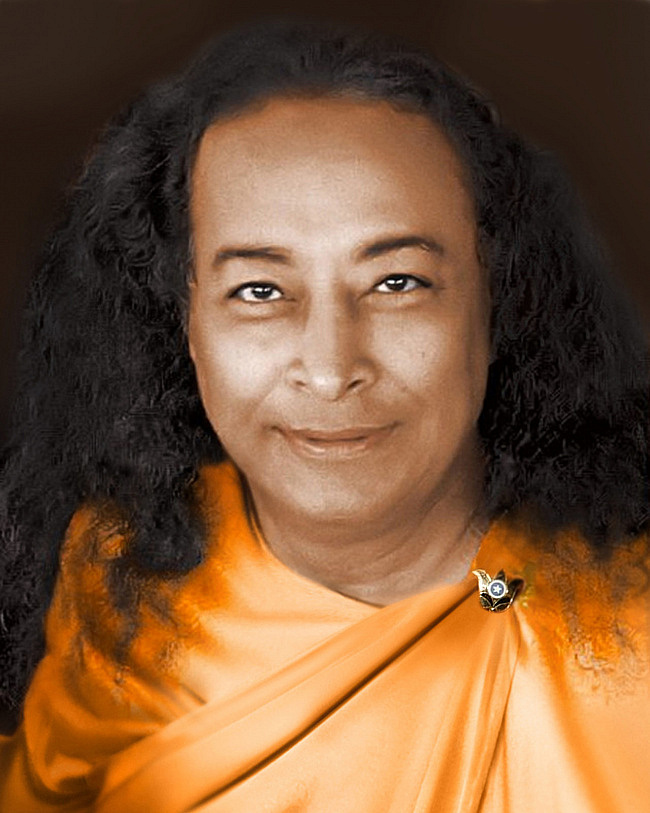
For the first time in my life I did not...
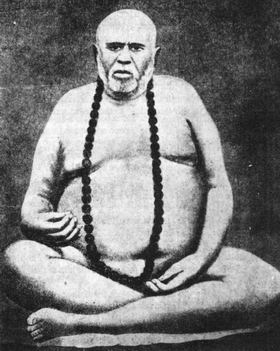
Trailanga Swami
Lahiri Mahasaya had a very famous friend, Swami Trailanga, who...
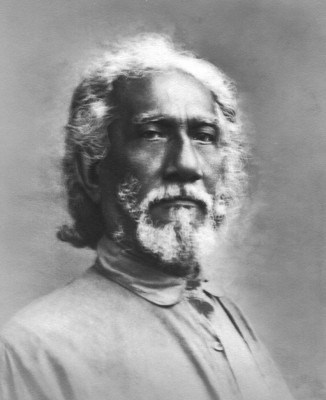
“Merciful Mother of the Universe, teach me Thyself through visions,...
My Transformational Fast
Whether famishment gleamed in my eye, I knew not. That...
My Sister Nalini
Soon after Ananta’s passing, my younger sister Nalini was brought...
My Saintly Parents
Both were blessed with saintly nature. Their mutual love, tranquil...
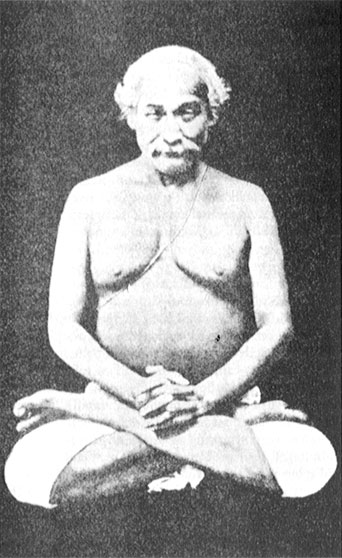
Lahiri Mahasaya’s Enigmatic Photograph
One of my most precious possessions is that same photograph....
What Is Behind the Darkness of Closed Eyes?
“What is behind the darkness of closed eyes?” This probing...
I Am Healed by Lahiri Mahasaya
Lahiri Mahasaya left this world shortly after I had entered...
Explore Autobiography of a Yogi
Stories and Insights from a Spiritual Classic
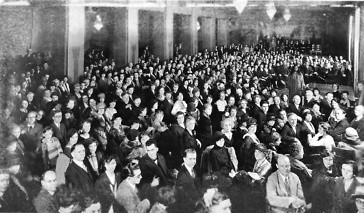
A Vision of America
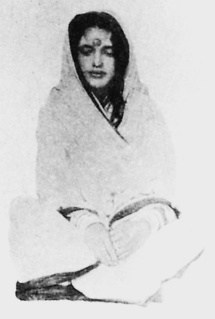
The Bengali "Joy-Permeated Mother"
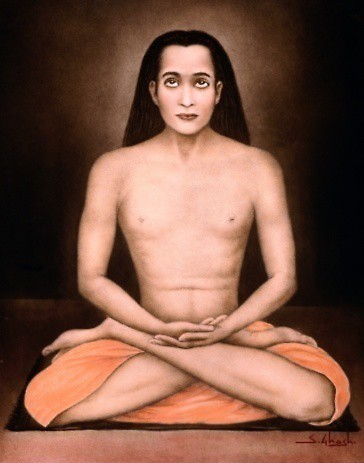
Babaji's Divine Permission
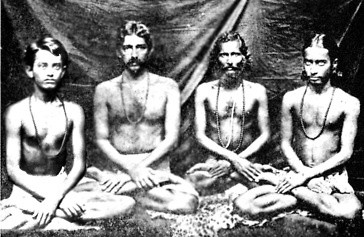
Christmas and the Silver Cup
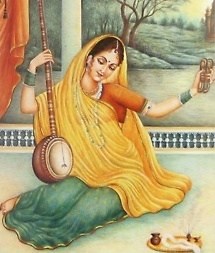
A Poem by Mirabai
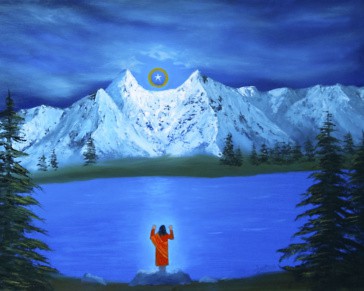
What is Behind the Darkness of Closed Eyes?
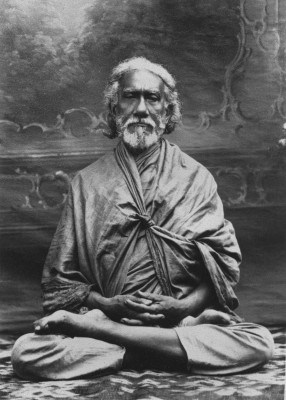
Sri Yukteswar Expounds on the Bible
What makes autobiography of a yogi so great.
Adapted from an answer on Quora by Nabha Cosley • January 9, 2016
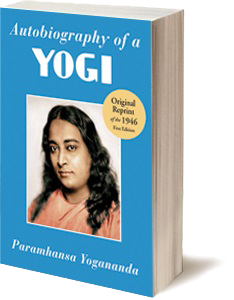
Autobiography of a Yogi by Paramhansa Yogananda talks about miracles, the yogic teachings, and the teachings of Jesus Christ in a modern way — a way that is easy to understand and even entertaining. For someone interested in spirituality, or even just alternate ways of looking at life, it’s incredibly illuminating.
The world is a different place than it would have been without this book. The New Age movement in the West, the impact the book has had on leaders in many fields, and the rise in the practice of yoga and meditation are due in large part to Yogananda’s influence and the influence of his autobiography.
Philip Goldberg wrote in American Veda that “Among the people I interviewed about their key spiritual influences, a high percentage named a book, and by far the book most often mentioned was Yogananda’s unique memoir. A distant second was Be Here Now by Ram Dass, and he mentioned the Autobiography .”
Sometimes people read it and have their life turned around entirely. It’s a book that, like other scripture, inspires life-long devotion.
Anyone who is interested should read it. It is a great book in every sense of the word.
“As a bright light shining in the midst of darkness, so was Yogananda’s presence in this world. Such a great soul comes on earth only rarely, when there is a real need among men.”
The Shankaracharya of Kanchipuram
“The greatest book I ever read.”
Swami Kriyananda
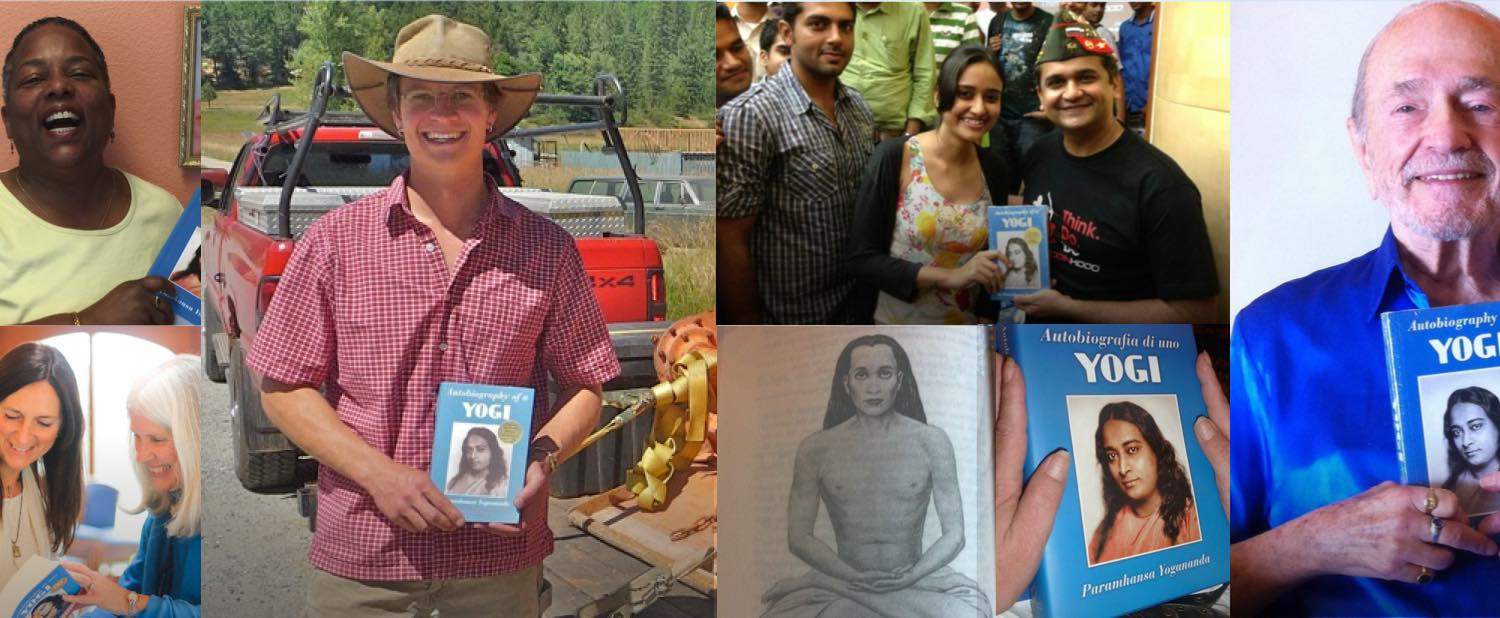
Ananda Meditation App
A free app with guided meditations and techniques, based on the teachings of Paramhansa Yogananda. Go deeper in the joy of your own Self.
Start a New Meditation Practice or Inspire Your Current One
The 10-week Ananda Course in Meditation online course is designed to provide in-depth instruction in scientific meditation techniques that bring more peace, deeper relaxation, and focused concentration to every area of your life, regardless of outer conditions.
These techniques are based on the teachings of Paramhansa Yogananda, author of Autobiography of a Yogi.
Learn to Meditate: 5 Essential Keys to Meditation
Learn five simple steps to maximize meditation as a tool for inner peace in this free webinar.
- Your cart is empty! Return to shop
Please wait while you are redirected to the right page...
- Project Gutenberg
- 74,332 free eBooks
Autobiography of a Yogi by Paramahansa Yogananda

Read now or download (free!)
| Choose how to read this book | Url | Size | ||||
|---|---|---|---|---|---|---|
| https://www.gutenberg.org/ebooks/7452.html.images | 1.0 MB | |||||
| https://www.gutenberg.org/ebooks/7452.epub3.images | 1.9 MB | |||||
| https://www.gutenberg.org/ebooks/7452.epub.images | 1.9 MB | |||||
| https://www.gutenberg.org/ebooks/7452.epub.noimages | 603 kB | |||||
| https://www.gutenberg.org/ebooks/7452.kf8.images | 2.3 MB | |||||
| https://www.gutenberg.org/ebooks/7452.kindle.images | 2.3 MB | |||||
| https://www.gutenberg.org/ebooks/7452.txt.utf-8 | 960 kB | |||||
| https://www.gutenberg.org/cache/epub/7452/pg7452-h.zip | 2.0 MB | |||||
| There may be related to this item. | ||||||
Similar Books
About this ebook.
| Author | |
|---|---|
| Title | Autobiography of a Yogi |
| Credits | an anonymous Project Gutenberg volunteer. Revised by Richard Tonsing. |
| Summary | "Autobiography of a Yogi" by Paramahansa Yogananda is a spiritual memoir written in the mid-20th century. This influential work recounts Yogananda's journey towards self-realization, offering insights into the philosophy and practice of yoga, the dynamics of the guru-disciple relationship, and the lives of various spiritual figures in India. At the start of this memoir, Yogananda reflects on his early life and family, detailing his experiences growing up in a spiritually oriented Bengali household. He shares poignant memories of his parents, especially his mother, and discusses their devotion to spiritual practice, particularly the effects of their relationship with the renowned yogi, Lahiri Mahasaya. The opening chapters also introduce themes of spiritual awakening, the significance of divine experiences, and Yogananda's desire to understand higher states of consciousness, setting the stage for his later encounters with various saints and significant figures in his quest for enlightenment. (This is an automatically generated summary.) |
| Language | English |
| LoC Class | |
| Subject | |
| Subject | |
| Category | Text |
| EBook-No. | 7452 |
| Release Date | Feb 1, 2005 |
| Most Recently Updated | Jun 4, 2024 |
| Copyright Status | Public domain in the USA. |
| Downloads | 1272 downloads in the last 30 days. |
- Privacy policy
- About Project Gutenberg
- Terms of Use
- Contact Information

Server Busy
Our servers are getting hit pretty hard right now. To continue shopping, enter the characters as they are shown in the image below.
Type the characters you see in this image:

- TN Navbharat
- ET Now Swadesh
- Times Drive
- Health and Me
10 Key Takeaways from the Book 'Autobiography of a Yogi'

Updated Jan 31, 2024, 11:00 IST
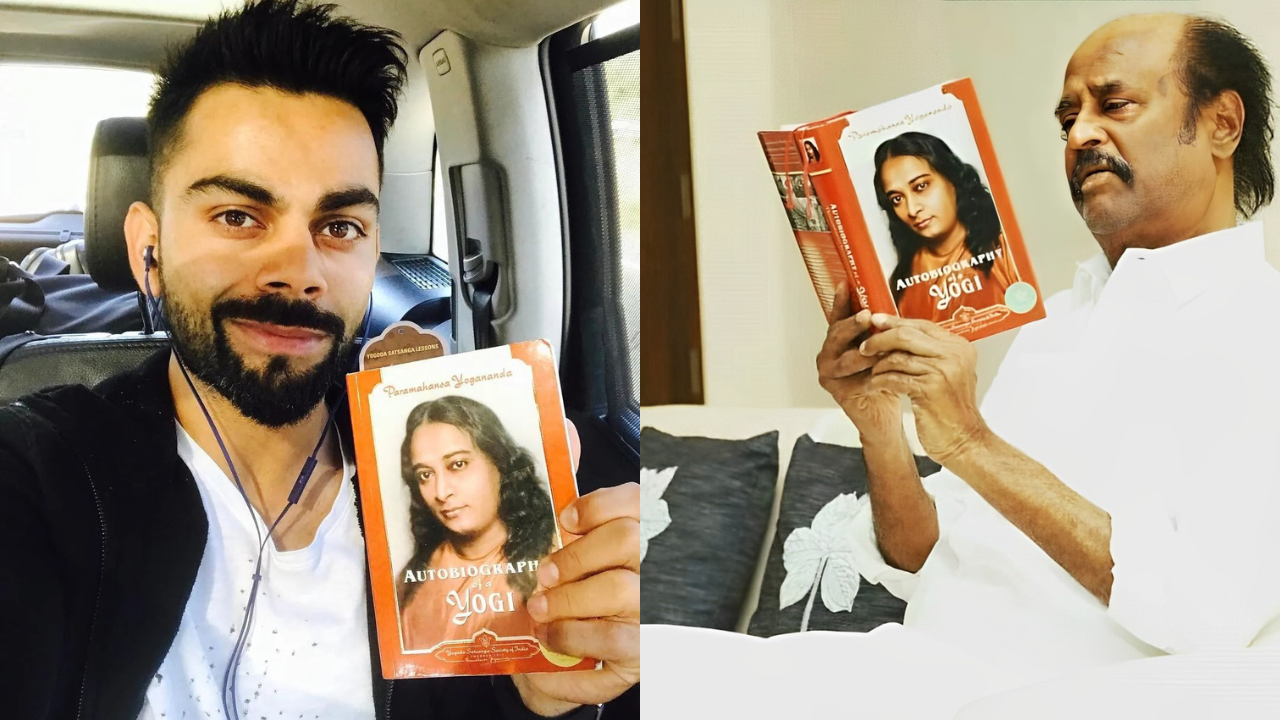
Kris Kristofferson Dies: All On His Family - Wife Lisa Meyers And Children

Amid Diddy's Arrest Saga, A New 'List' Of Celebs Surfaces

Why Taylor Swift Is Not At Chiefs vs Chargers Game To Support Kelce | Her Alleged Schedule

Floral-Themed Living Room Ideas For A Fresh Look

Why Do Teens Lie About Petty Things? Ways To Talk About It

After Helene, Will Another Storm Hit Florida And North Carolina? Here's The Forecast

Israel Strikes Cola Neighborhood Of Beirut In Apparent Assassination Attempt: Reports

ATEEZ's Seonghwa Serves Up Best Gender-Neutral Look At 2024 Paris Fashion Week. See PICS

Professionals & enthusiasts who write about lifestyle and health in all their vibrancy. View More

8 Books to Read If You Liked Moby-Dick

Sophie Turner Admits It’s A Struggle Being A Single Mother; 5 Easy Ways To Cope

Burger To Ice Cream- 3 Chefs Share Exclusive Recipes To Try This Weekend

Autobiography of a Yogi – Review
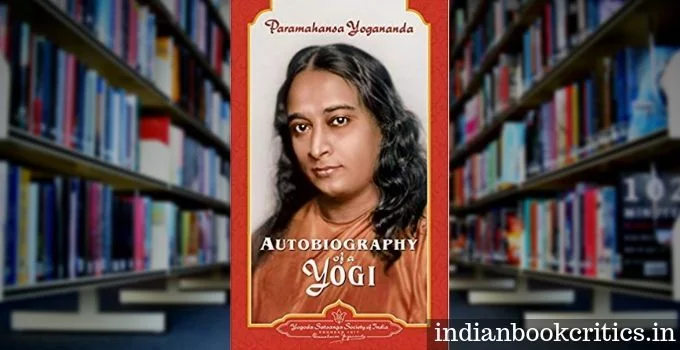
Autobiography of a Yogi was first published in the year 1946 and since then, it has never been out of print – such is the demand and influence of this book! Written by a saint, a philosopher, a Yogi and an enlightened soul from India, Paramhansa Yogananda, Autobiography of a Yogi has inspired many great personalities from different parts of the world – Steve Jobs is a prominent one among the millions inspired. The book has been written in plain language and it narrates the journey of Sri Yogananda on the path of Yog, Sadhna, tours and enlightenment.
Sri Yogananda has written many books and many of editions compile the talks and writings of this spiritual Guru. However, the popularity of this book is immense because it has recorded the journey of a man from supposed nothingness to realised nothingness. The author has commented on many issues, many great personalities and many great concepts of ancient Indian heritage that dazzles the world. These commentaries will be very beneficial for the readers who want to understand the Indian treasure of heightened knowledge.
Chapters like Rama is Raised from the Dead are very inspiring as well as very insightful. Yogananda’s commentary is full of knowledge from all the directions that was bestowed upon him by his Gurus and enlightened souls and also achieved by his own hard work and penance. There are many episodes of his life described in this bestselling book that might appear to betray the basic glories of science but are true and proven.
“Truth is exact correspondence with reality.”
There are many gems like this scattered here and there in this book and it will certainly be interesting to read the book and find more out for the readers who haven’t yet explored the pages of this joyous and popular autobiography. There are also many pictures of Yogananda and others in this book. His life, not in entirety, has been recorded by him. It has inspired many Indians including Vinod Khanna who thought to get lost in the search of divine after reading this one.
Let us be true; we cannot achieve that height which Paramhansa Yogananda has reached. However, who knows the man’s potential? Anything can happen and miracles do happen if you keep your eyes opened and senses free of negativity. This is the message that this book tries to deliver to the readers. You can get a copy from Amazon India and read this book today! Click the link below:
Buy the book now – click here – English
Buy the Hindi Edition – click here
review by Sumant for Indian Book Critics
Autobiography of a Yogi
- Indian Book Critics' Rating
A very interesting read… other than anything else! Everything else, you will figure out for yourself!

When the “Red Snow” falls: My fight with anxiety in Budapest by Sidaq Pratap Singh Book Review
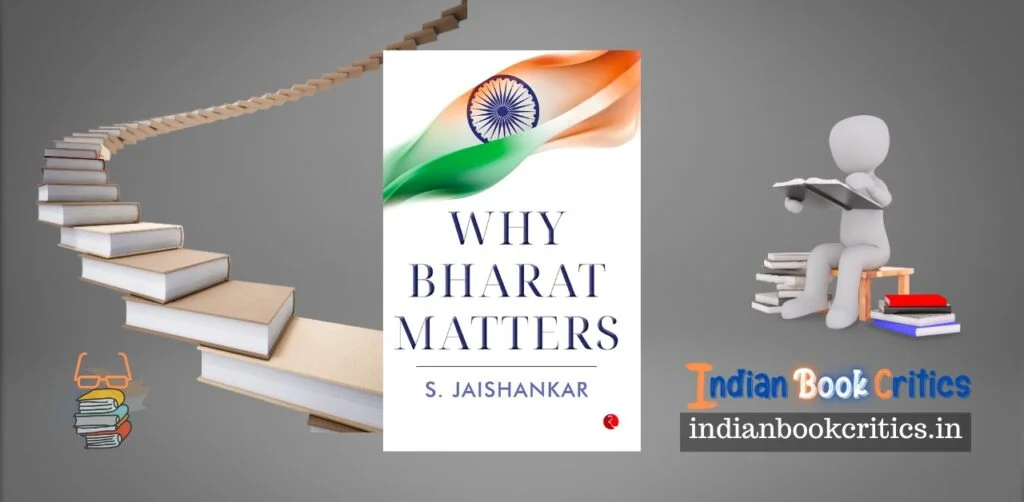
Why Bharat Matters by S Jaishankar Book Review
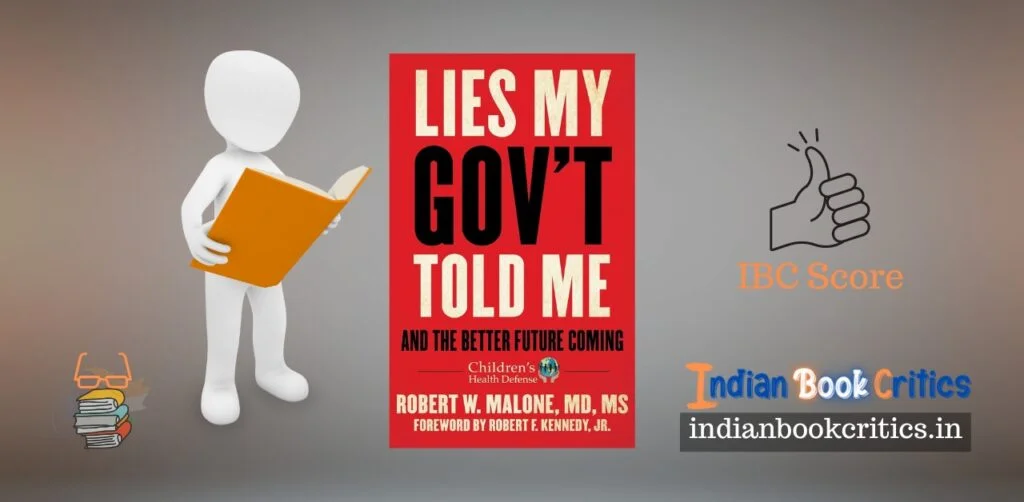
Lies My Gov’t Told me by Dr Robert Malone – Book Review
Leave a reply cancel reply.
Your email address will not be published. Required fields are marked *
Post Comment
- Politics & Social Sciences

Sorry, there was a problem.

Download the free Kindle app and start reading Kindle books instantly on your smartphone, tablet, or computer - no Kindle device required .
Read instantly on your browser with Kindle for Web.
Using your mobile phone camera - scan the code below and download the Kindle app.

Image Unavailable

- To view this video download Flash Player
Follow the author

Autobiography of a Yogi deluxe 75th Anniversary Edition Hardcover – December 6, 2021
- More than 100 photos, in sepia duotone and full color
- Elegant moire fabric endsheets
- Gilded page ends
- A ribbon bookmark
- Long-lasting Smythe-sewn binding
- Acid free archival paper
- Print length 624 pages
- Language English
- Publisher Self-Realization Fellowship
- Publication date December 6, 2021
- Dimensions 6.5 x 2.01 x 9.6 inches
- ISBN-10 0876129386
- ISBN-13 978-0876129388
- See all details

Editorial Reviews
About the author, product details.
- Publisher : Self-Realization Fellowship; 75th Anniversary deluxe edition (December 6, 2021)
- Language : English
- Hardcover : 624 pages
- ISBN-10 : 0876129386
- ISBN-13 : 978-0876129388
- Item Weight : 3.34 pounds
- Dimensions : 6.5 x 2.01 x 9.6 inches
- #4,243 in Religious Leader Biographies
- #4,284 in Inspiration & Spirituality
- #25,055 in Memoirs (Books)
About the author
Paramahansa yogananda.
1893 – 1952 Hailed as the “father of Yoga in the West,” Paramahansa Yogananda is regarded as one of the great spiritual figures of our time. Born in northern India, he came to the United States in 1920, where he founded Self-Realization Fellowship, to disseminate his writings and teachings worldwide. Through his best-selling classic, Autobiography of a Yogi, and his numerous other books, he has introduced millions throughout the world to the spiritual principles of yoga meditation and the universal truths underlying all world religions.
Customer reviews
- 5 star 4 star 3 star 2 star 1 star 5 star 85% 9% 3% 1% 2% 85%
- 5 star 4 star 3 star 2 star 1 star 4 star 85% 9% 3% 1% 2% 9%
- 5 star 4 star 3 star 2 star 1 star 3 star 85% 9% 3% 1% 2% 3%
- 5 star 4 star 3 star 2 star 1 star 2 star 85% 9% 3% 1% 2% 1%
- 5 star 4 star 3 star 2 star 1 star 1 star 85% 9% 3% 1% 2% 2%
Customer Reviews, including Product Star Ratings help customers to learn more about the product and decide whether it is the right product for them.
To calculate the overall star rating and percentage breakdown by star, we don’t use a simple average. Instead, our system considers things like how recent a review is and if the reviewer bought the item on Amazon. It also analyzed reviews to verify trustworthiness.
Customers say
Customers find the book profoundly inspiring, filled with great truths, and insights. They describe it as an engaging read that is enjoyable. Readers praise the writing quality as wonderful, personal, and poetic. They also mention the autobiography is fascinating and presented with humility. Opinions are mixed on the authenticity, with some finding it real and believable, while others say it's riddled with nonsense.
AI-generated from the text of customer reviews
Customers find the book profoundly inspiring, filled with great truths, insights, and fascinating accounts of the life of a yogi. They say it stimulates their minds, hearts, and spirits. Readers also mention the book opens their eyes in many ways.
"...saints who dedicated their lives to God, it is an introduction to the scientific techniques to having a direct experience of the Soul, the spark of..." Read more
"This book will Astound you with its technical knowledge and depth and its powerful testimony of the miraculous...." Read more
" Poetic , amazing and timeless - I am surprised I didn’t read this book at a younger age or know about it...." Read more
"I read this book in 1975. It is a powerfully spiritual true story about the very first yogi that came to the US...." Read more
Customers find the book fascinating, enjoyable, and engaging. They say it's interesting on many levels and a great addition to their collection. Readers also mention that conflict can be illuminating and advance spiritual seekers' understanding.
"... Conflict can be illuminating and advance the spiritual seekers understanding. And Jesus certainly does not fail to provide the path to resolution!..." Read more
"...A truly remarkable man and remarkable book . If this book was required reading in every school the world would be a far better place." Read more
"Poetic, amazing and timeless - I am surprised I didn’t read this book at a younger age or know about it...." Read more
"The Bible for yogis. Great book to teach you how to practice Kriya Yoga. Read this book today. I love it." Read more
Customers find the writing quality of the book wonderful, personal, and narrative. They appreciate the beautiful turn of words and poetic style. Readers also mention the author has an unsually warm style and excellent understanding of translingual pronunciations.
"...Profound. I recommend listening to the book as well as it helps with pronunciations and the absorption of the content...." Read more
"...Swami Yogananda had a lovely, narrative writing style which makes the book very pleasurable to read...." Read more
"...It is beautifully written , inspiring, and such a pleasure to read." Read more
"...This autobiography is not easy to read , but the information is valuable. Some of the names and words in the book are hard to pronounce...." Read more
Customers find the autobiography great, with fascinating accounts of the life of a yogi. They appreciate the author's humility, reverence, wit, and awe. Readers also mention the book is genius and informative.
"...Not only is this a fascinating account of modern day saints who dedicated their lives to God, it is an introduction to the scientific techniques to..." Read more
"...A truly remarkable man and remarkable book. If this book was required reading in every school the world would be a far better place." Read more
"I found this autobiography to be intriguing ...." Read more
"...Very informative indeed. The author has so much credibility , that I am inclined to believing him...." Read more
Customers find the book enchanted, astounding, and rich. They also say it's magnificent, insightful, and interesting. Readers mention it's pure and full of spirit.
"...and I think this would be the perfect book to start with as it lays a nice fundation explaining his life and many concepts." Read more
"...It is here on Amazon. It is deep and philosophical and REAL, no miracles, and it is also funny and entertaining." Read more
"...His use of the English language, as well as analogies, are masterful and helps make the reading of his facinating life stories that much more..." Read more
"...The wisdom is deep, pure and profound throughout. It can take several reads to absorb all its depth, and it’s more and more enjoyable each time...." Read more
Customers appreciate the book's value for money. They mention it's an easy read and has an excellent price.
"...It is very inspiring and motivating. It creates positive effect. Very affordable ." Read more
"The price was very competitive & condition was better than what was stated!" Read more
"...It is also a great Kindle deal ! Having it readily accessible on your computer is a great resource." Read more
"...Check it out, there is great value between these pages , and it seems that the insight one draws from this can be very unique to the individual, and..." Read more
Customers have mixed opinions about the authenticity of the book. Some mention it's believable, while others say it's riddled with nonsense and lacks logic.
"...Yet Yogananda's words ring with absolute truth and certainty . Be prepared to open your mind to unlimited possibilities as you read...." Read more
"...to me seem a bit unconvincing because there are very simplistic explanations of some stories which are of supernatural nature, and there is mention "..." Read more
"...It also provides many real life evidences that support the fact often expressed by Dr. Napoleon Hill that “Anything the mind of man/woman can..." Read more
"...For me, the book was interesting, but not as profound as I hoped before I read it." Read more
Customers find the book slow-paced, time-consuming, and difficult to read. They also say it's hard to grasp and skipable.
"...there are some topics in the book that are quite exceptional and hard to grasp ...." Read more
"...I found it very enlightening. It starts off a little slow but then quickly goes into a hyperdrive after his childhood years...." Read more
"...read by Ben Kingsley has been very enjoyable, and makes like long drives go by quickly .Highly recommended." Read more
"... Too time consuming and I cannot build a story in my mind while I am consistently referring to dictionary.com...." Read more
Reviews with images

Infinite beauty 💖

- Sort reviews by Top reviews Most recent Top reviews
Top reviews from the United States
There was a problem filtering reviews right now. please try again later..
Top reviews from other countries
- About Amazon
- Investor Relations
- Amazon Devices
- Amazon Science
- Sell products on Amazon
- Sell on Amazon Business
- Sell apps on Amazon
- Become an Affiliate
- Advertise Your Products
- Self-Publish with Us
- Host an Amazon Hub
- › See More Make Money with Us
- Amazon Business Card
- Shop with Points
- Reload Your Balance
- Amazon Currency Converter
- Amazon and COVID-19
- Your Account
- Your Orders
- Shipping Rates & Policies
- Returns & Replacements
- Manage Your Content and Devices
- Conditions of Use
- Privacy Notice
- Consumer Health Data Privacy Disclosure
- Your Ads Privacy Choices

IMAGES
VIDEO
COMMENTS
Simply put, this seminal work is a legacy of wisdom. While people cite a wide range of benefits of reading Autobiography of a Yogi some of the most important takeaways are inspired by these Paramahansa Yogananda quotes: "Since you alone are responsible for your thoughts, only you can change them." Conscious, purposeful living is a way to keep your thoughts flowing and positive.
Autobiography of a Yogi by Paramahansa Yogananda is a spiritual classic published in 1946. It recounts Yogananda's life, his search for his guru, and his teachings on Kriya Yoga. The book has introduced many to meditation and yoga and has been influential in both Eastern and Western spiritual circles. It has been translated into over fifty ...
When I met Paramahansa Yogananda in 1943 I was nine years old. My father was a Self-Realization Fellowship member and attended services at the temple in San Diego. In 1947 I read his copy of Autobiography of a Yogi, which Paramahansaji had given him. My father was very unassuming and never tried to influence others with his own beliefs.
One book in particular stayed with Steve Jobs his entire life, Autobiography of a Yogi...'the guide to meditation and spirituality that he had first read as a teenager, then re-read in India and had read once a year ever since.' --Huffington Post, review of Walter Isaacson's biography of Steve Jobs Fabulous stories from his life keep the reader inspired, informed, and thoroughly entertained ...
T he value of Yogananda's Autobiography is greatly enhanced by the fact that it is one of the few books in English about the wise men of India which has been written, not by a journalist or foreigner, but by one of their own race and training—in short, a book about yogis by a yogi. As an eyewitness recountal of the extraordinary lives and powers of modern Hindu saints, the book has ...
Autobiography of a Yogi is the compelling story of Paramahansa Yogananda, one of the most revered spiritual figures of our time. As a young man Paramahansa Yogananda embarked on a quest to find his spiritual master, which he did in the form of Swami Sri Yukteswar - together they achieved 'a oneness of silence, words seemed the rankest superfluities'.
George Harrison, Steve Jobs, Ravi Shanka and even Elvis Presley have all cited Autobiography of a Yogi as a life-changing read. Autobiography of a Yogi remains the greatest selling spiritual autobiography of all time (nearly 4.5 million copies had been sold as of Spring 2011, according to author Philip Goldberg in his book, American Veda).
Paramhansa Yogananda (1893-1952) was a yogi and guru, best known for introducing millions of Westerners to meditation and yoga through his book, Autobiography of a Yogi. Yogananda was born in Gorakhpur, India, to a religious family. He was taught the way of the yogi and spiritual discipline, and upon graduating from Calcutta University in ...
About the author (2017) Paramhansa Yogananda (1893-1952) was a yogi and guru, best known for introducing millions of Westerners to meditation and yoga through his book, Autobiography of a Yogi. Yogananda was born in Gorakhpur, India, to a religious family. He was taught the way of the yogi and spiritual discipline, and upon graduating from ...
He had begun his own quest for self-realization very early in life, a story vibrantly captured in the critically acclaimed 2014 documentary Awake: The Life of Yogananda. His youthful search ...
In 1974, Jobs traveled to India with a friend after reading Be Here Now and Paramhansa Yogananda's Autobiography of a Yogi. The trip turned out to be a disappointment. Jobs later said that he realized "we weren't going to find a place where we could go for a month to become enlightened.". Though he regularly attended a zen meditation ...
Autobiography of a Yogi is an autobiography of Paramahansa Yogananda (5 January 1893-7 March 1952) first published in 1946. Paramahansa Yogananda was born as Mukunda Lal Ghosh in Gorakhpur, India, into a Bengali Hindu family. Autobiography of a Yogi introduces the reader to the life of Paramahansa Yogananda and his encounters with spiritual figures of both the Eastern and the Western world.
A Top 100 Spiritual Book of the Twentieth Century This is a new edition, featuring previously unavailable material, of a true spiritual classic. Autobiography of a Yogi is one of the best-selling Eastern philosophy titles of all-time, with millions of copies published. New Bonus Materials added to this edition include: a) the last chapter that Yogananda wrote in 1951 covering the years 1946 ...
This is an unusual, unique book. Autobiography of a Yogi by Paramhansa Yogananda talks about miracles, the yogic teachings, and the teachings of Jesus Christ in a modern way — a way that is easy to understand and even entertaining. For someone interested in spirituality, or even just alternate ways of looking at life, it's incredibly ...
Paramhansa Yogananda (1893-1952) was a yogi and guru, best known for introducing millions of Westerners to meditation and yoga through his book, Autobiography of a Yogi. Yogananda was born in Gorakhpur, India, to a religious family. He was taught the way of the yogi and spiritual discipline, and upon graduating from Calcutta University in ...
Top 3 Reasons Why You Should Read The Autobiography Of A Yogi. Other Than The Fact That Virat Kohli Swears By It. Alisha Fernandes. As you can probably tell, we're as big fans of Virat Kohli as the next guy, and in this idolising culture it's easy to take everything at face value just because we love the guy recommending it. So, when a bit of ...
Summary. "Autobiography of a Yogi" by Paramahansa Yogananda is a spiritual memoir written in the mid-20th century. This influential work recounts Yogananda's journey towards self-realization, offering insights into the philosophy and practice of yoga, the dynamics of the guru-disciple relationship, and the lives of various spiritual figures in ...
Autobiography of A Yogi by Paramahansa Yogananda is a spiritual classic that offers profound insights and inspiration. Discover the life journey of a yogi, delve into ancient wisdom, and embark on a transformative quest for self-realization. Experience the captivating story of a yogi's spiritual awakening.
Paramahansa Yogananda's 'Autobiography of a Yogi' is more than just a book; it is a spiritual journey that has inspired millions of people worldwide. This book, originally published in 1946, remains a major work in introducing meditation and Kriya Yoga to the West. Here are seven important lessons from this remarkable work.
Non-fiction. Autobiography of a Yogi was first published in the year 1946 and since then, it has never been out of print - such is the demand and influence of this book! Written by a saint, a philosopher, a Yogi and an enlightened soul from India, Paramhansa Yogananda, Autobiography of a Yogi has inspired many great personalities from ...
Autobiography of a Yogi was recommended to me by various sources as one of the basic books any spiritual seeker should read. The moment I picked it up I already wholeheartedly agreed and after reading the book in its entirety, I think it is one of the best spiritual books written in the last century.
Yogananda Paramahansa. 1893 - 1952 Hailed as the "father of Yoga in the West," Paramahansa Yogananda is regarded as one of the great spiritual figures of our time. Born in northern India, he came to the United States in 1920, where he founded Self-Realization Fellowship, to disseminate his writings and teachings worldwide.